Wainscoting can instantly elevate an entryway by adding architectural interest, texture, and a sense of timeless elegance. From classic beadboard to bold, dark hues, there are myriad ways to personalize this traditional millwork style to suit any home aesthetic. In the following sections, you’ll discover 20 distinct wainscoting ideas—each with its own unique charm and practical benefits—to inspire your next entryway makeover.
1. Classic White Beadboard Wainscoting
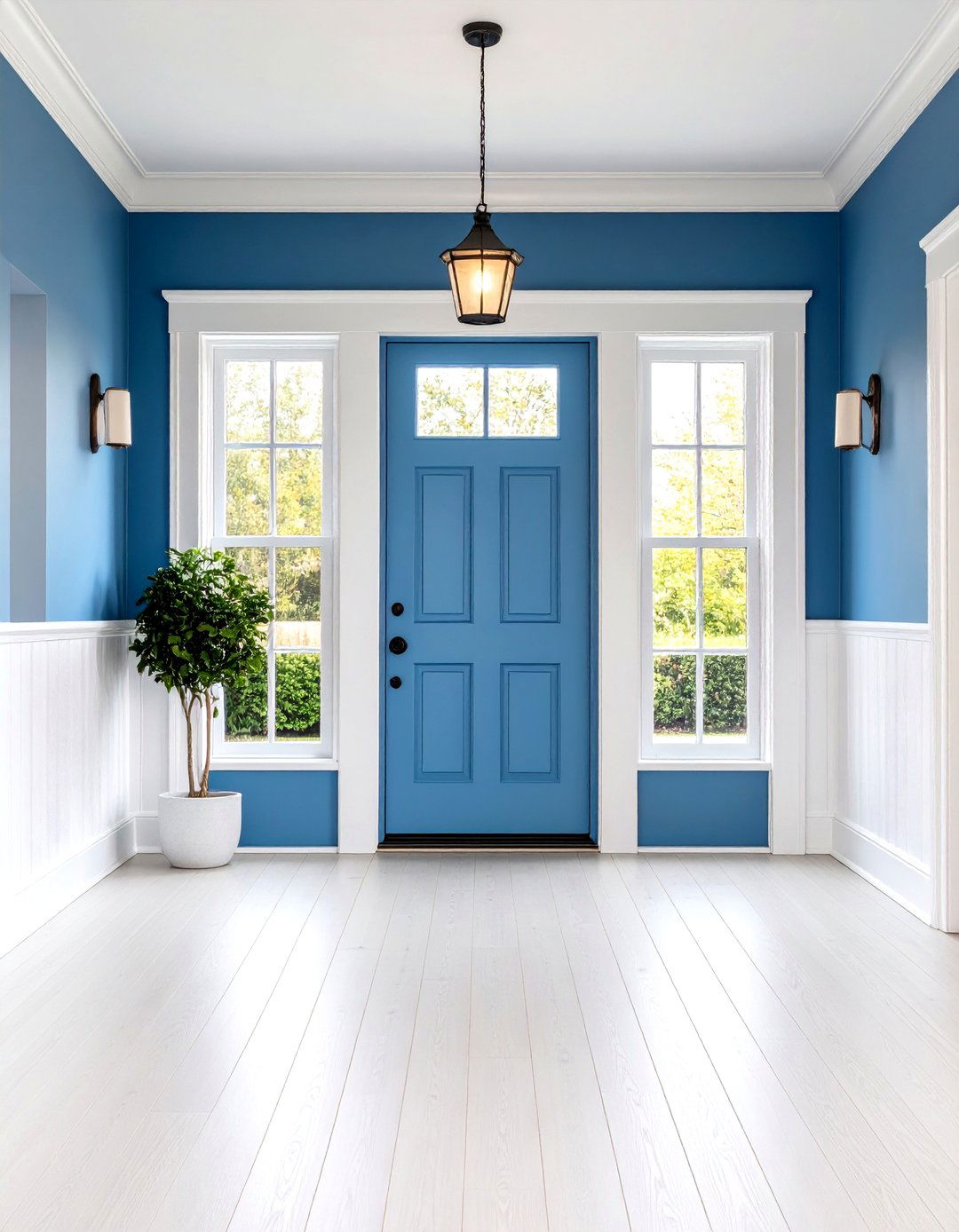
Classic white beadboard wainscoting offers a clean, cottage-style look that brightens any entryway. The narrow, vertical grooves of beadboard create subtle texture, while the white finish keeps the space feeling open and welcoming. This style pairs beautifully with crisp trim and simple hardware, making it a versatile backdrop for any décor. It’s particularly effective in smaller entryways, where the light-reflecting white paint can help visually expand the space. Beadboard is also relatively simple to install and maintain, making it a favorite for both DIY enthusiasts and professional remodelers alike.
2. Two-Tone Color Block Wainscoting
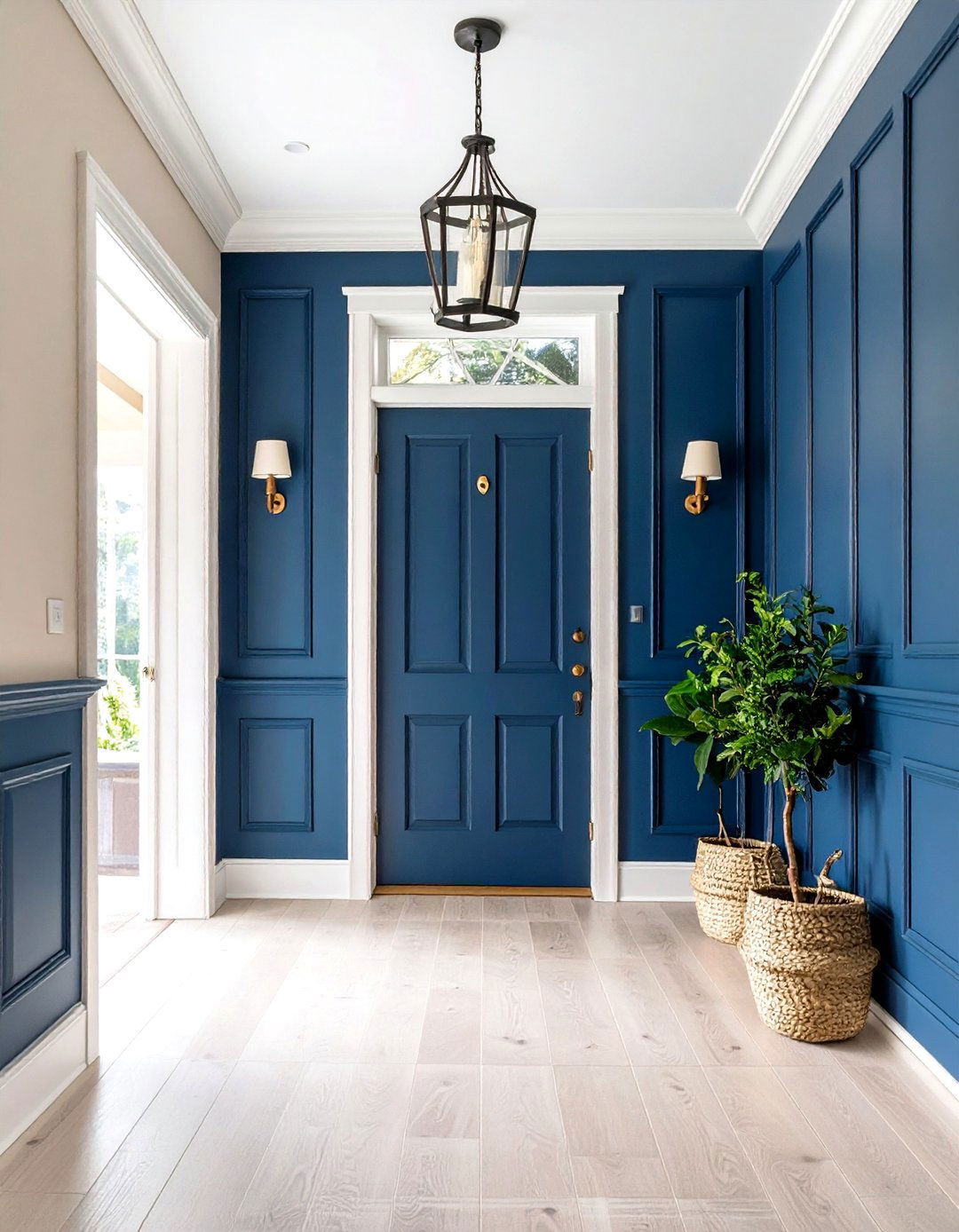
Two-tone color block wainscoting introduces visual interest by painting the lower panels in a contrasting hue to the upper walls. For example, navy or forest green panels below a soft neutral wall color can create depth and drama in an entryway. This approach also allows you to tie in accent colors from furniture or décor, coordinating seamlessly with bench cushions or wall art. The color block effect delineates the wainscoting as a distinct design feature, making it feel intentional and custom.
3. Board-and-Batten Wainscoting
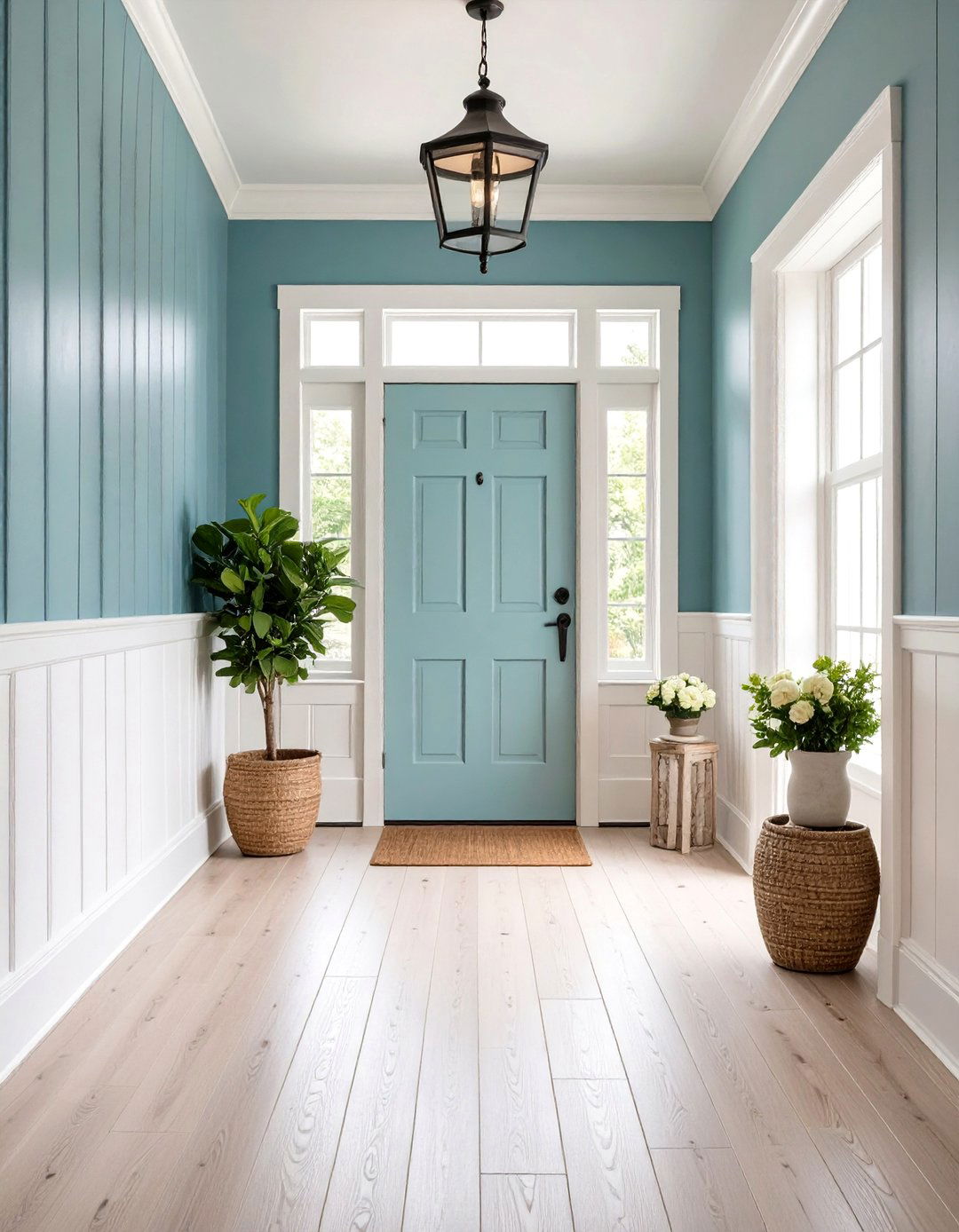
Board-and-batten wainscoting features wide vertical boards (the “boards”) with narrow strips (the “battens”) covering the seams. This rustic yet refined look works particularly well in farmhouse, cottage, and transitional styles. The play of light and shadow on the battens adds depth, while the strong vertical lines draw the eye upward, making ceilings feel taller. Installing board-and-batten from floor to a mid-wall height also provides a durable surface that can withstand the bumps and scuffs common in high-traffic entryways.
4. Raised Panel Wainscoting
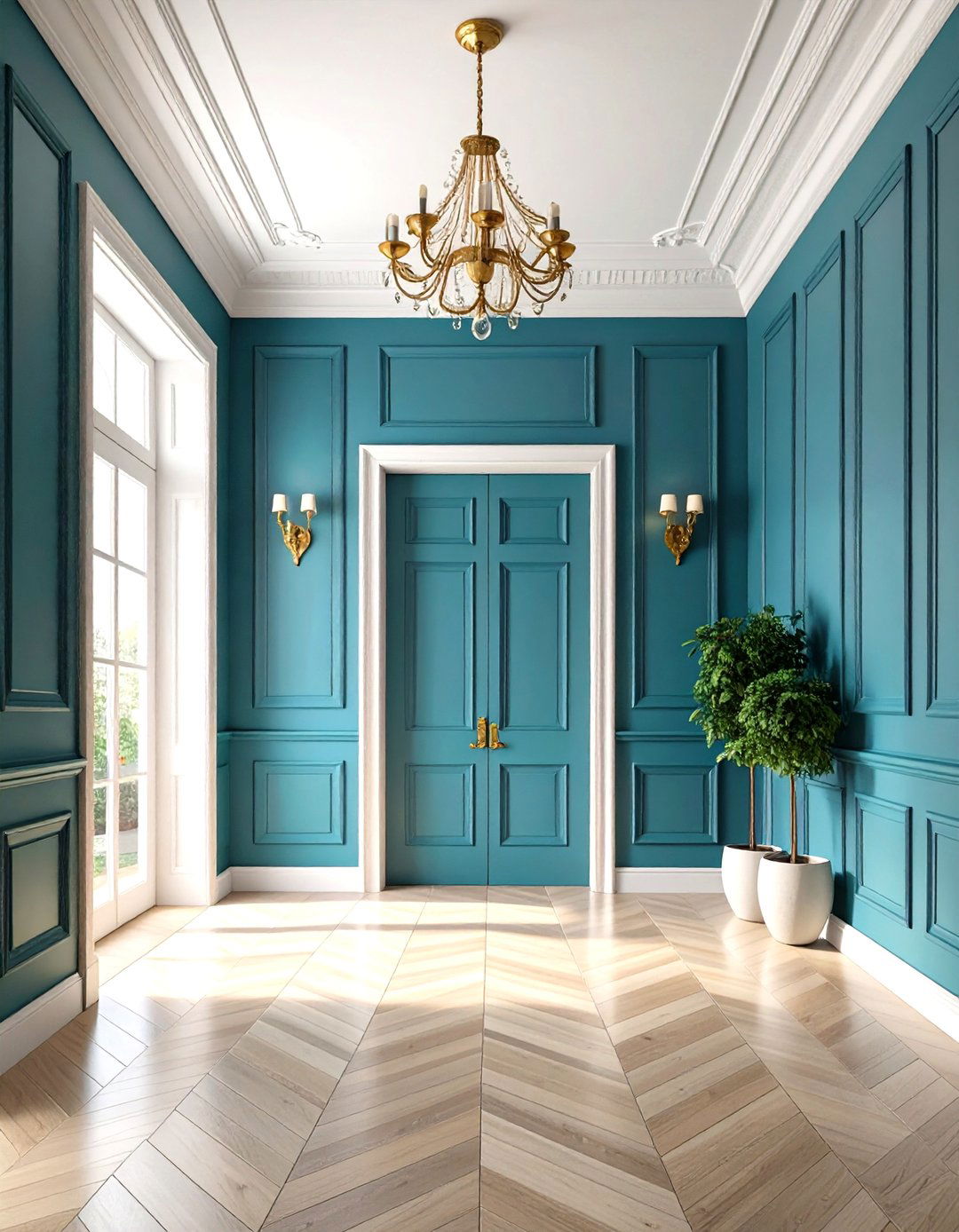
Raised panel wainscoting is a more formal option, featuring recessed frames and panels that stand proud of the wall. This traditional style, often seen in historic homes, conveys sophistication and craftsmanship. In an entryway, raised panels can be painted in a classic white or tinted to accentuate the profile, creating elegant shadow lines. Though installation may require skilled carpentry, the end result is a rich, dimensional wall treatment that immediately elevates the home’s first impression.
5. Picture Frame Molding Wainscoting
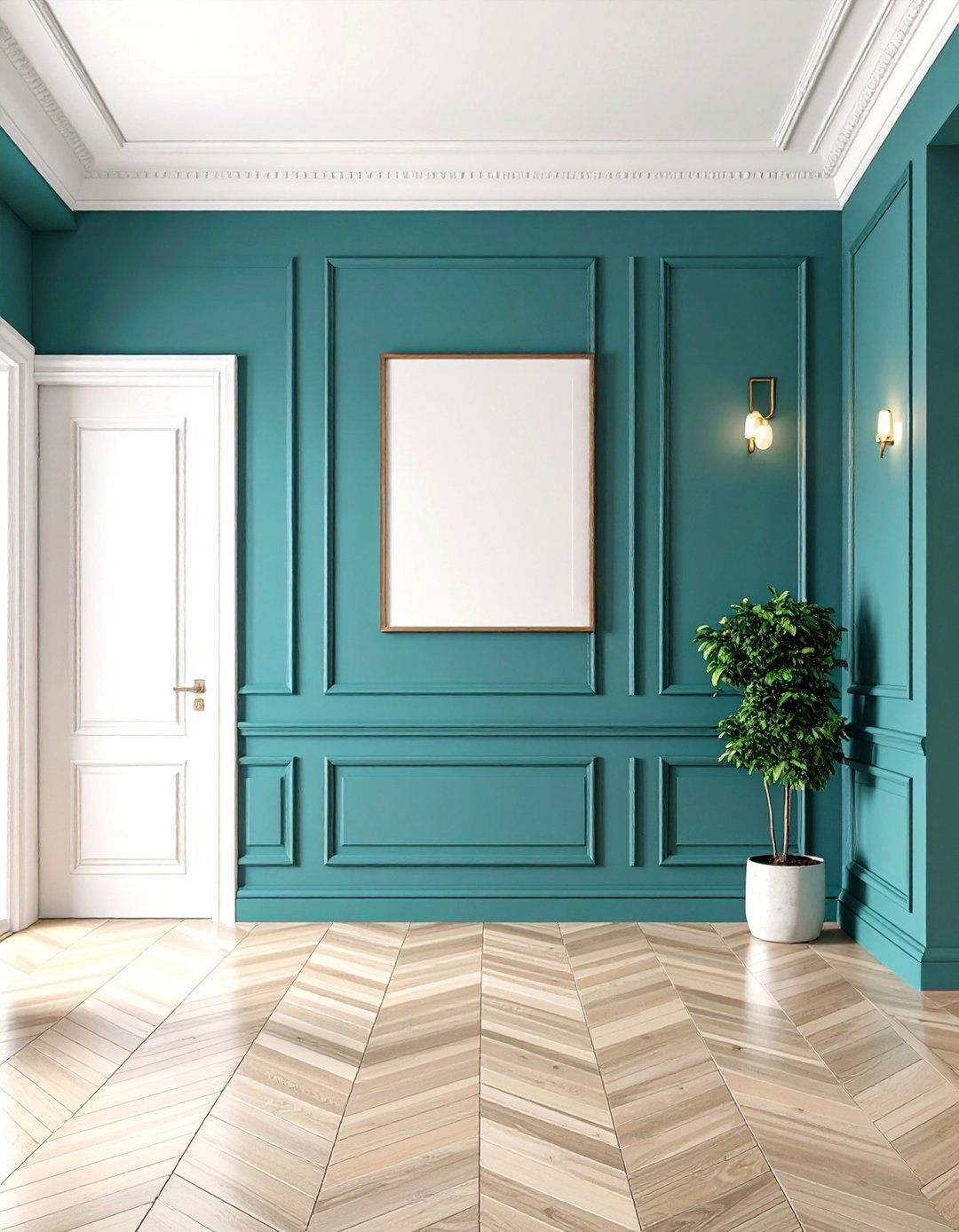
Picture frame molding wainscoting uses rectangular or square frames applied directly to the wall to mimic the look of built-in panels. This minimalist approach can be customized in scale and layout, from tight, repetitive frames for a modern feel to larger, more traditional proportions. It’s an excellent way to add architectural detail without the bulk of full panels, and it can be painted to match the wall for subtle texture or in a contrasting color for bold impact.
6. Dark Moody Wainscoting
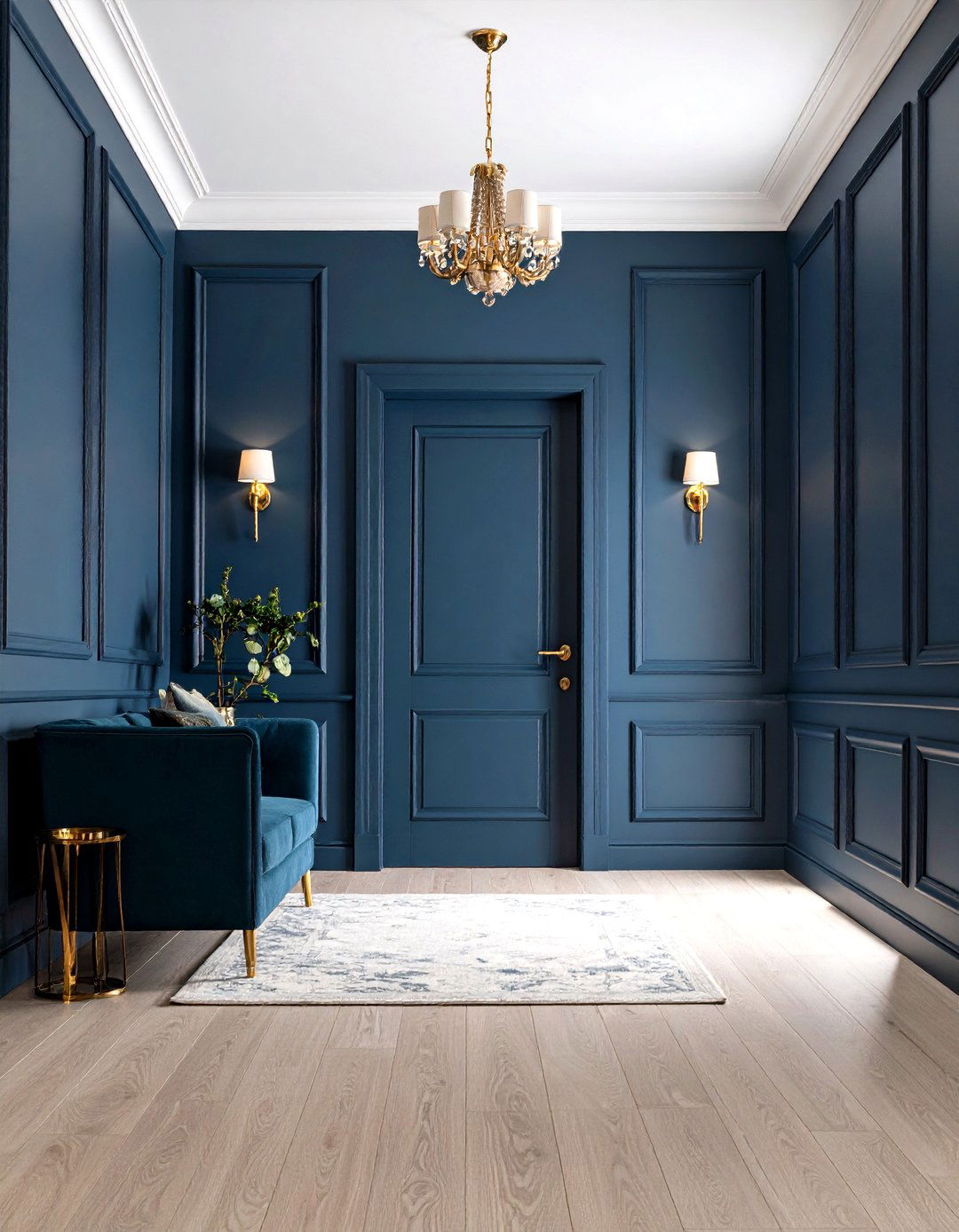
Painting wainscoting in deep, moody hues—such as charcoal, navy, or forest green—creates a dramatic entryway that feels both cozy and sophisticated. Dark panels grounded below lighter walls draw the eye and make a strong style statement. This approach works especially well in entryways with high ceilings or abundant natural light, balancing the intensity of the color. Pair dark wainscoting with metallic hardware or lighter flooring to keep the overall space from feeling too heavy.
7. Natural Wood Wainscoting
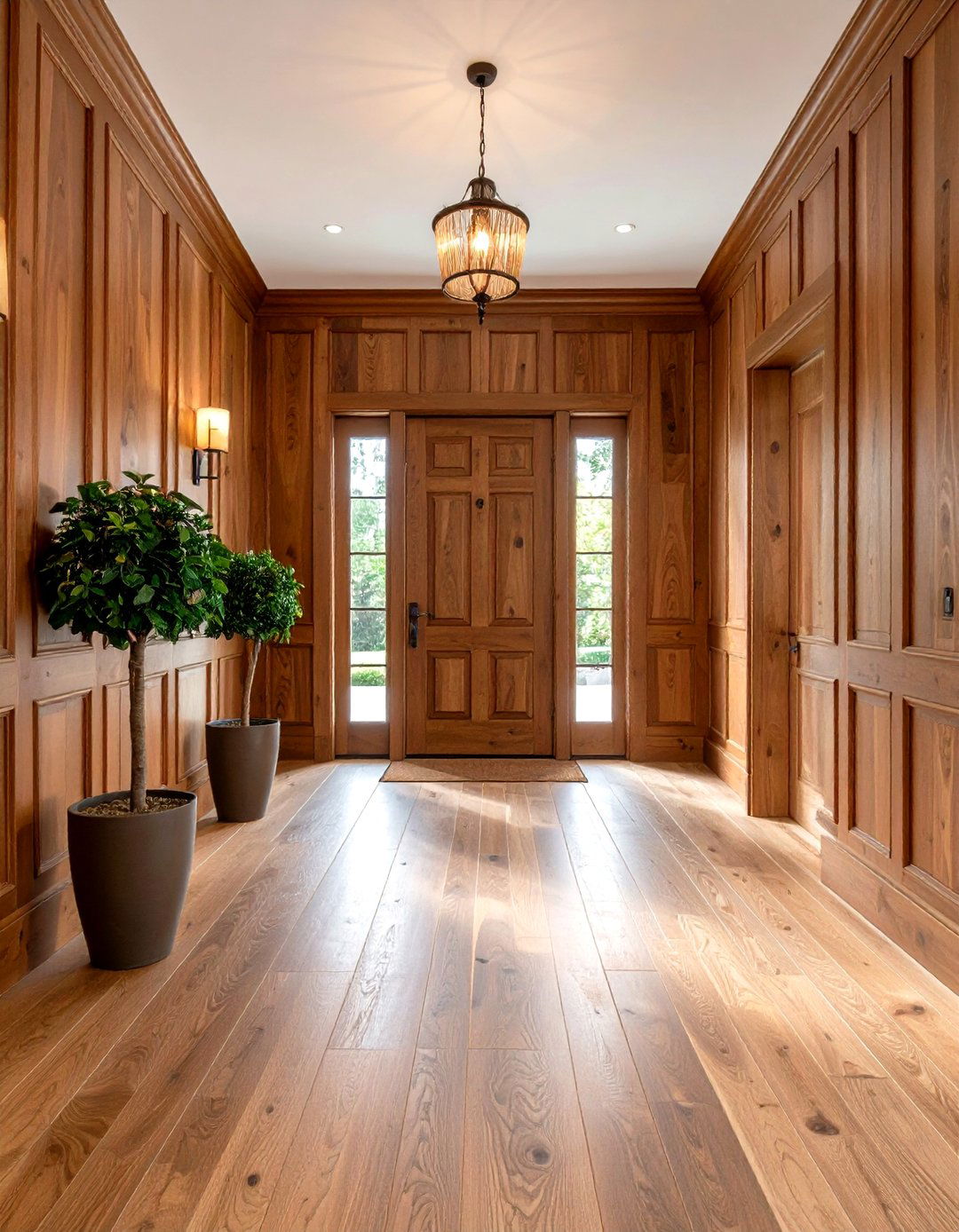
Natural wood wainscoting celebrates the grain and warmth of timber, bringing an organic touch to the entryway. Whether you choose rich walnut, warm oak, or painted pine for a lightly tinted finish, wood panels add visual warmth. Wood wainscoting pairs beautifully with stone or tiled floors, creating a rustic-luxe vibe. To protect against dents and moisture, finish the wood with a durable clear coat or wax. This look is ideal for craftsman, rustic, or Scandinavian-inspired homes.
8. Shiplap Half-Wall Wainscoting
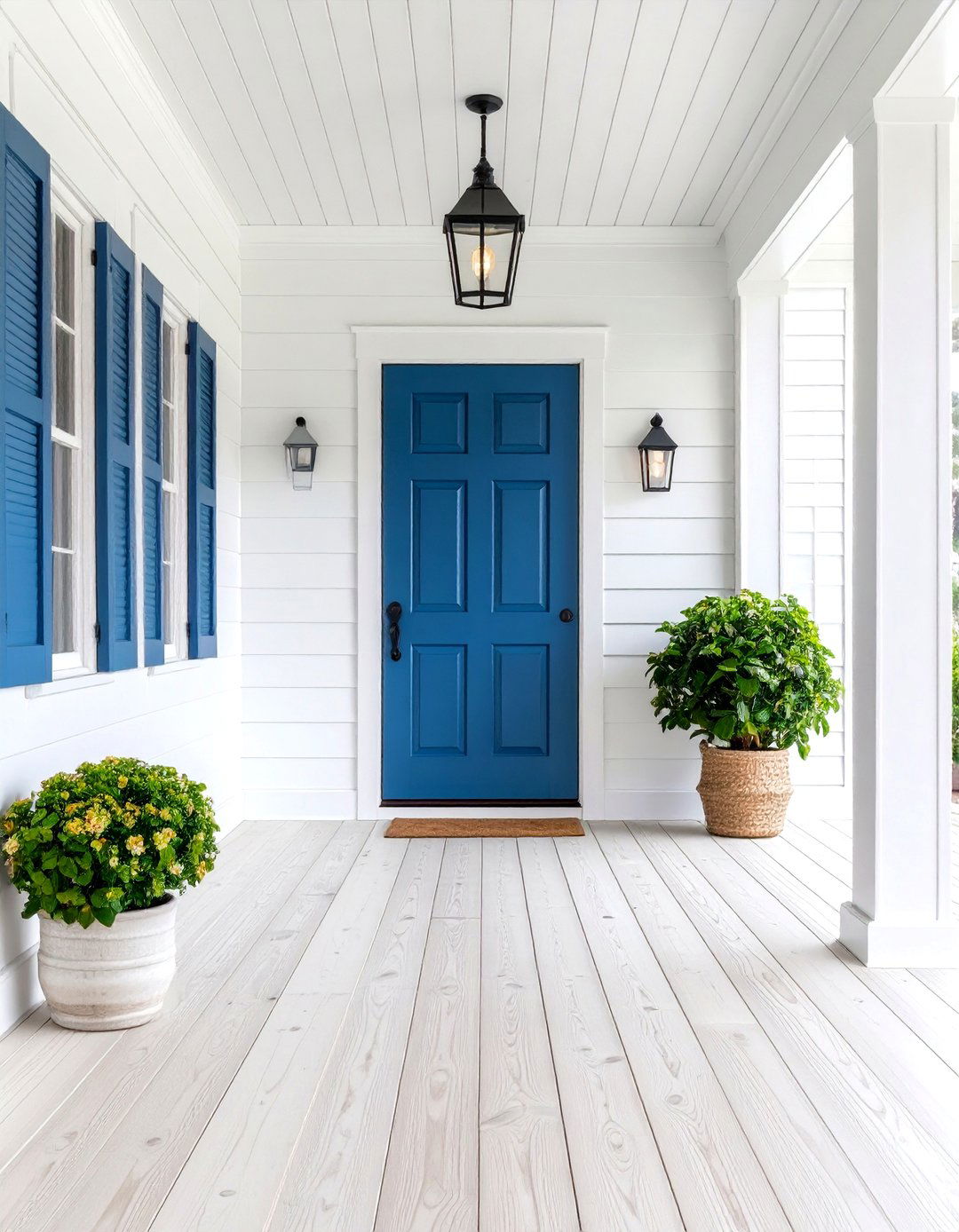
Shiplap—horizontal boards with overlapping edges—can be used as half-wall wainscoting for a clean, coastal-inspired look. The horizontal lines visually widen the entryway, making small spaces feel more expansive. Painted white shiplap is a classic option, but you can also stain or paint the boards in muted tones for a modern twist. Shiplap is also forgiving to install, as the overlapping boards conceal small gaps, giving a uniform appearance.
9. Vertical Planked Wainscoting
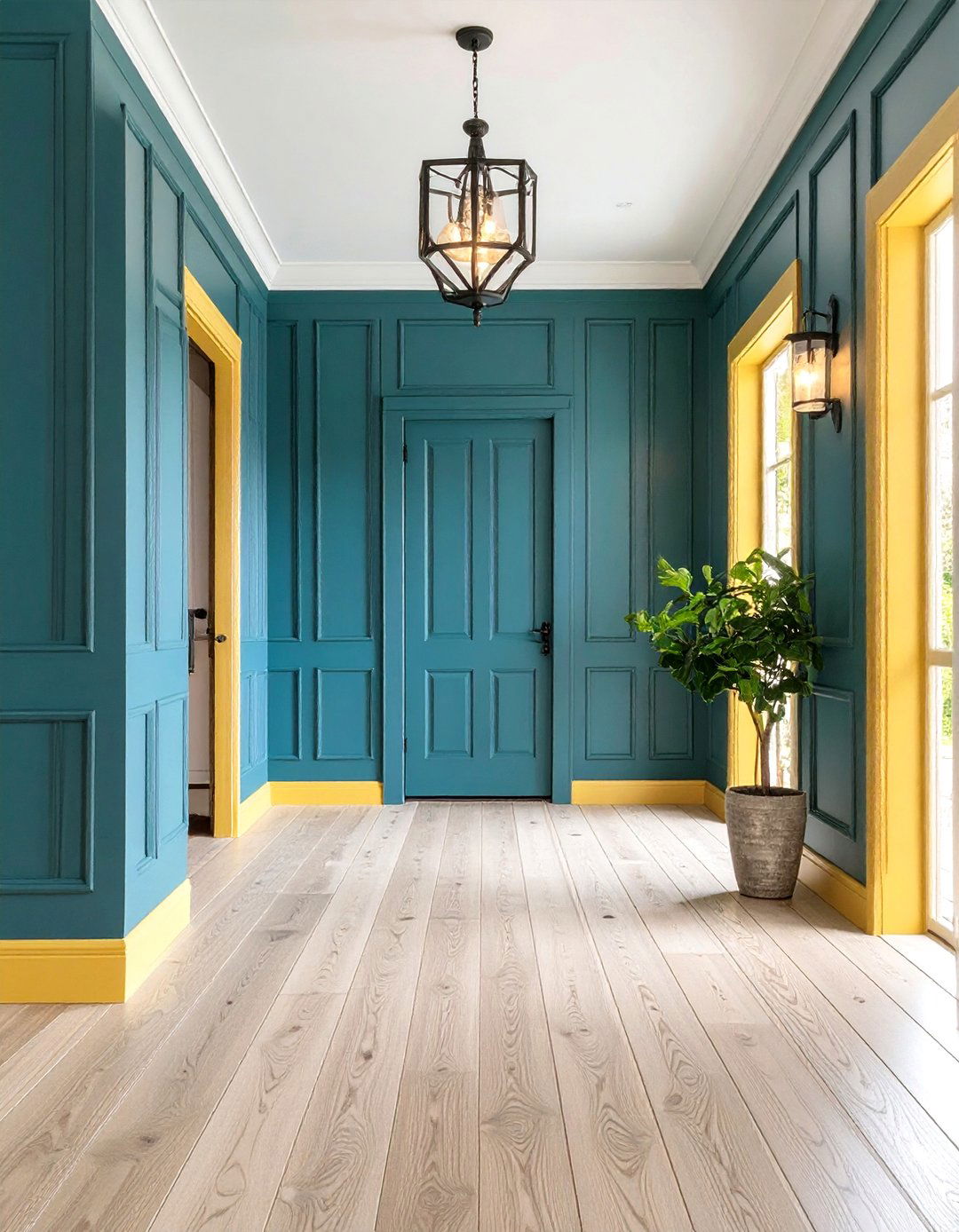
Vertical plank wainscoting consists of evenly spaced, wide vertical boards that offer a streamlined, contemporary take on traditional beadboard. By varying plank width and spacing, you can create custom patterns that suit minimalist or modern rustic styles. Vertical lines accentuate height, drawing the eye upward and making an entryway feel grander. Finish the planks in a matte paint to emphasize texture without gloss, keeping the aesthetic grounded and modern.
10. Horizontal Planked Wainscoting
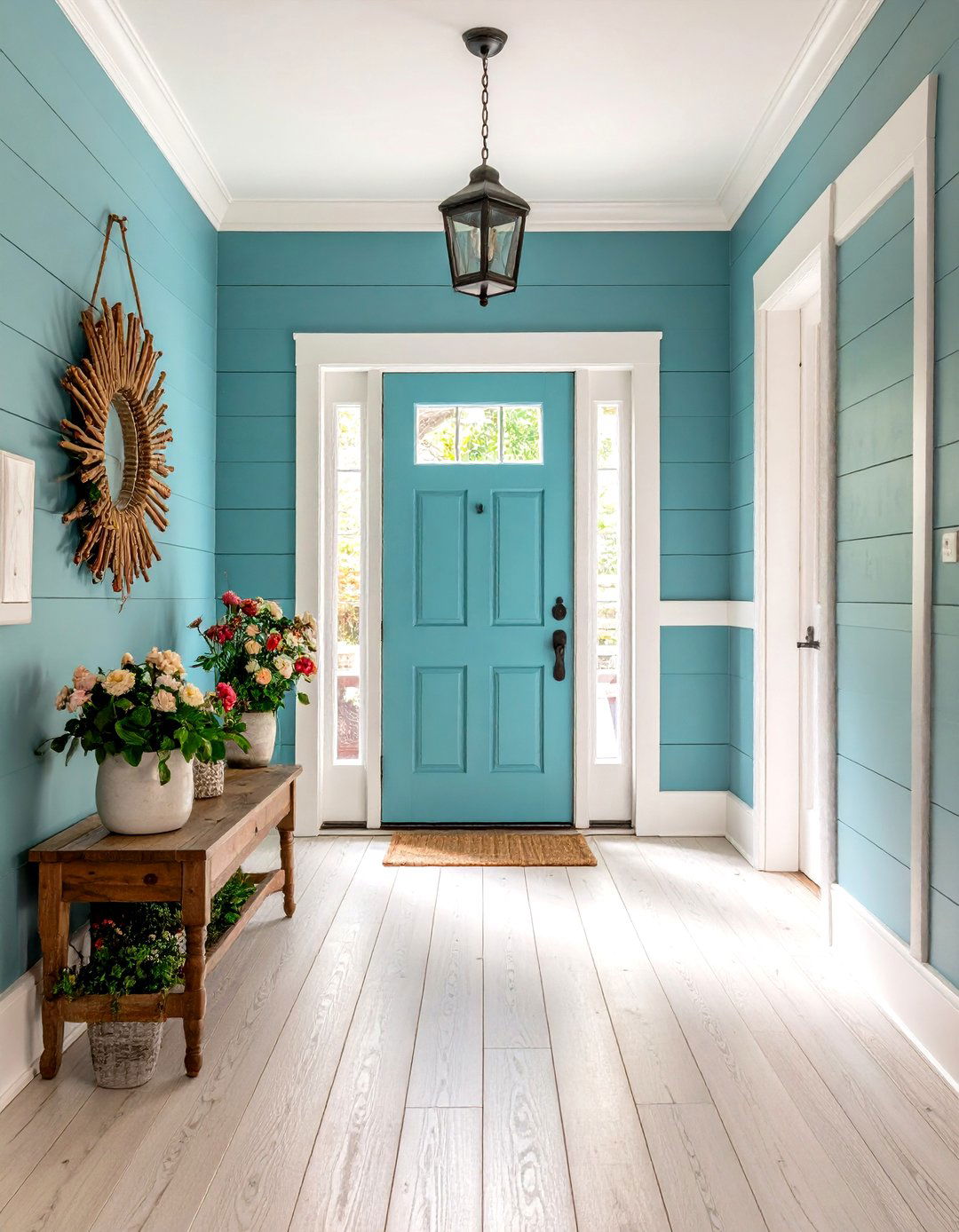
In contrast to vertical planks, horizontal planked wainscoting offers a laid-back, relaxed feel reminiscent of beach cottages and casual farmhouse styles. The horizontal orientation can make ceilings appear lower and walls feel cozier. Paint the planks in soft neutrals or muted blues for a coastal appeal, or choose a natural wood stain for warmth. Horizontal planks also provide an opportunity to play with varied board widths, adding subtle visual interest.
11. Flooring-Coordinated Wainscoting
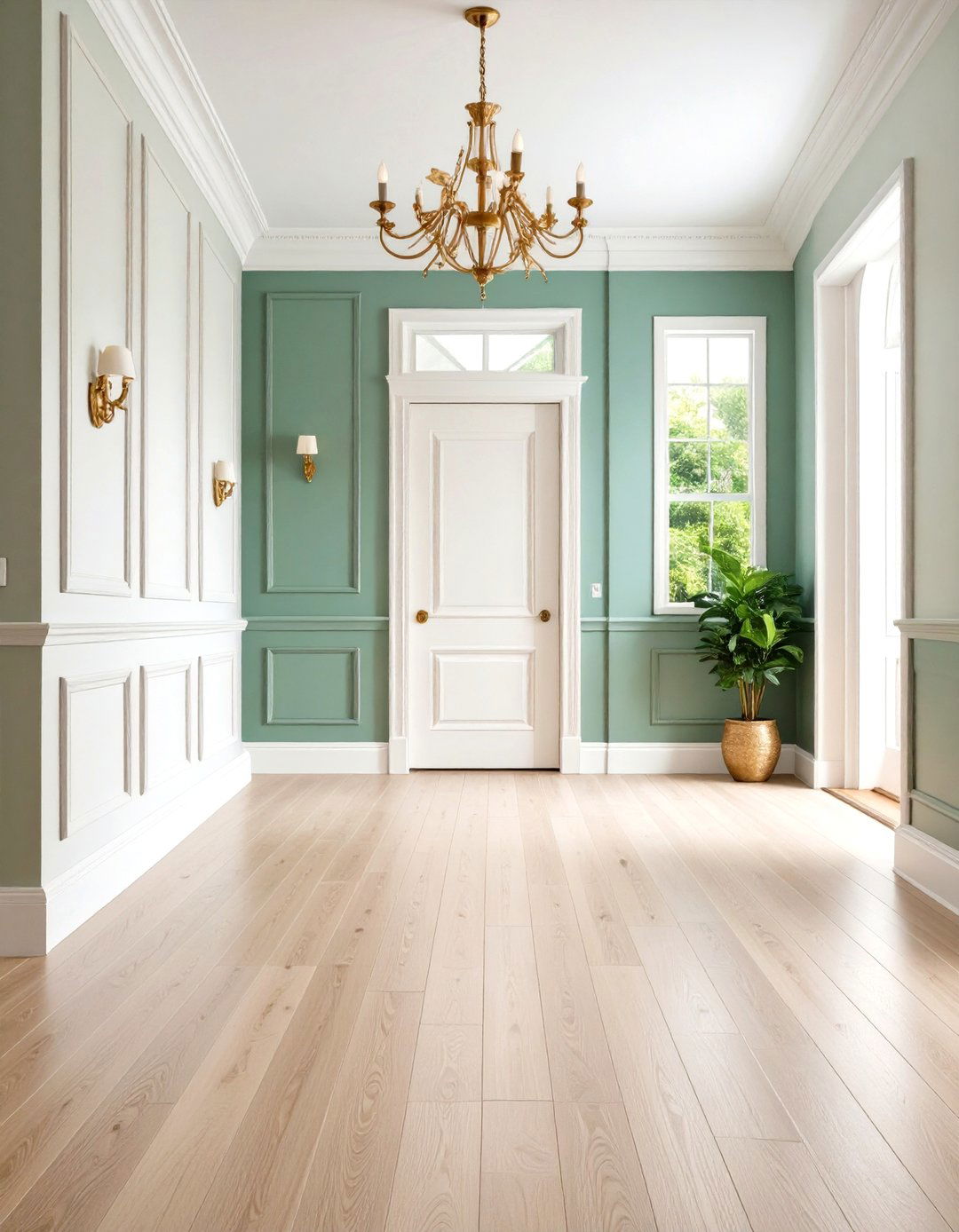
Coordinating your wainscoting color or material with the entryway flooring creates a harmonious, custom look. For example, stain wood wainscoting to match hardwood floors, or paint vinyl-clad boards in complementary tile grout colors. This seamless approach ties the room together and gives a sense of thoughtful design. It can also help mask scuffs on lower panels, as matching tones make wear less noticeable.
12. Textured Wallpaper Above Wainscoting
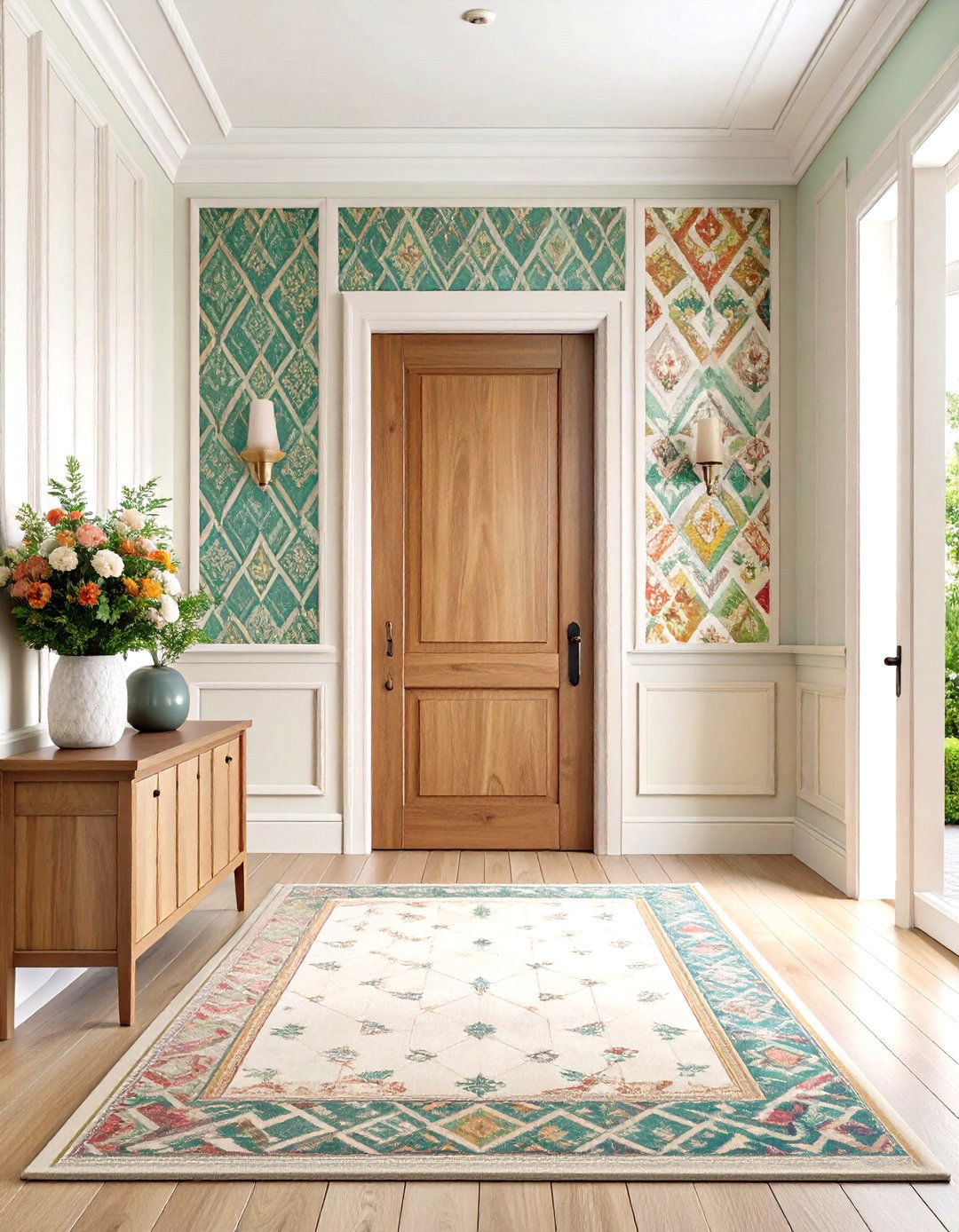
Pairing wainscoting with textured or patterned wallpaper above the chair rail combines durability below with high-impact style overhead. Grasscloth, embossed vinyl, or geometric prints can add personality, while the wainscoting protects lower walls from scuffs. This juxtaposition of hard millwork and soft texture creates a layered, designer-ready look. Just be sure to choose a wallpaper suitable for high-traffic areas to ensure longevity.
13. Built-In Storage Bench with Wainscoting Back
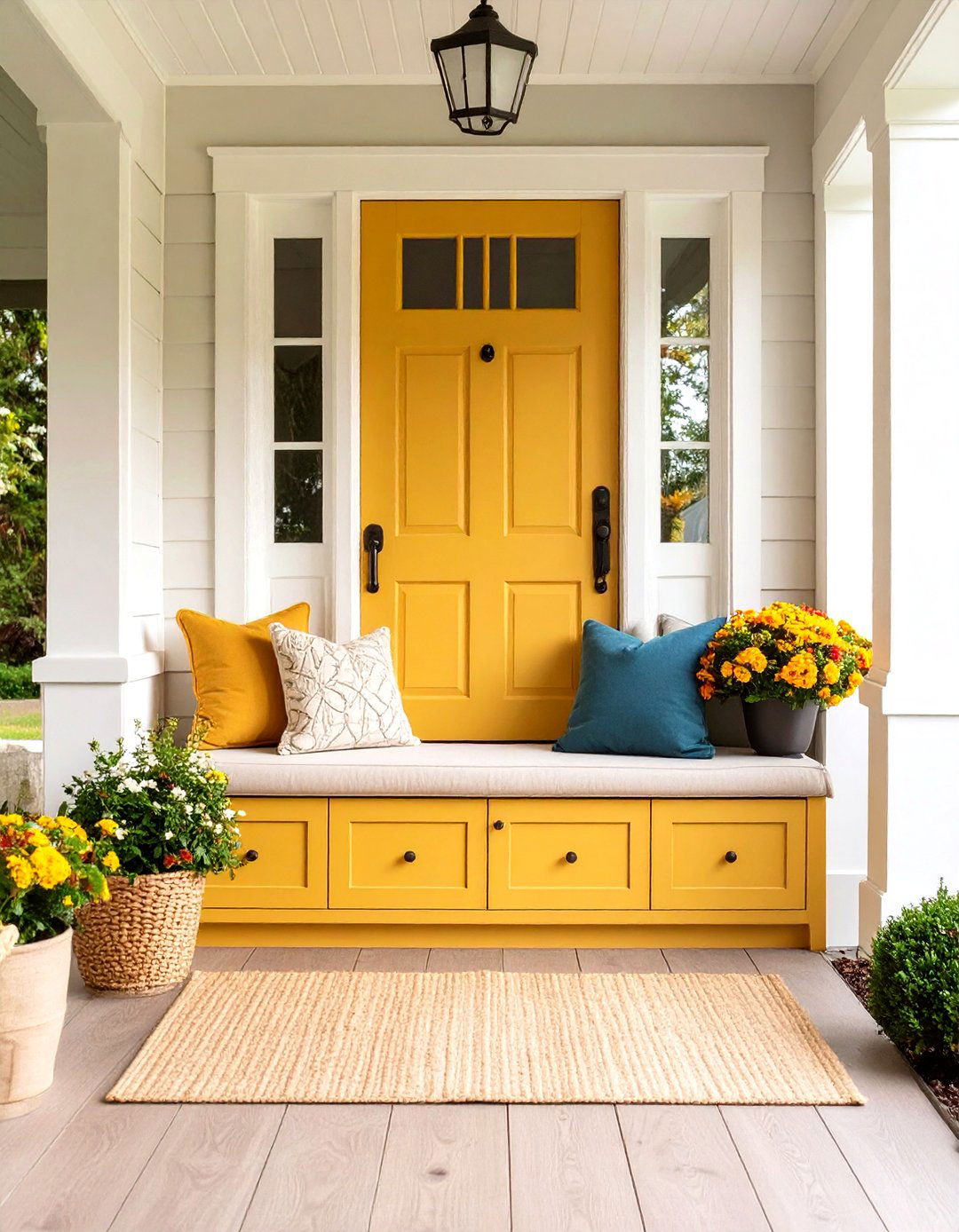
Integrate a built-in storage bench into your wainscoting design to maximize functionality. The bench back can feature the same panel style—be it beadboard or raised panels—tying seating to wall décor. Beneath the seat, cubbies or drawers provide concealed storage for shoes, bags, and seasonal items. Top off the bench with cushioned seating in a coordinating fabric, and add wall hooks above the wainscoting for coats and hats.
14. Wainscoting with Integrated Hooks/Peg Rail
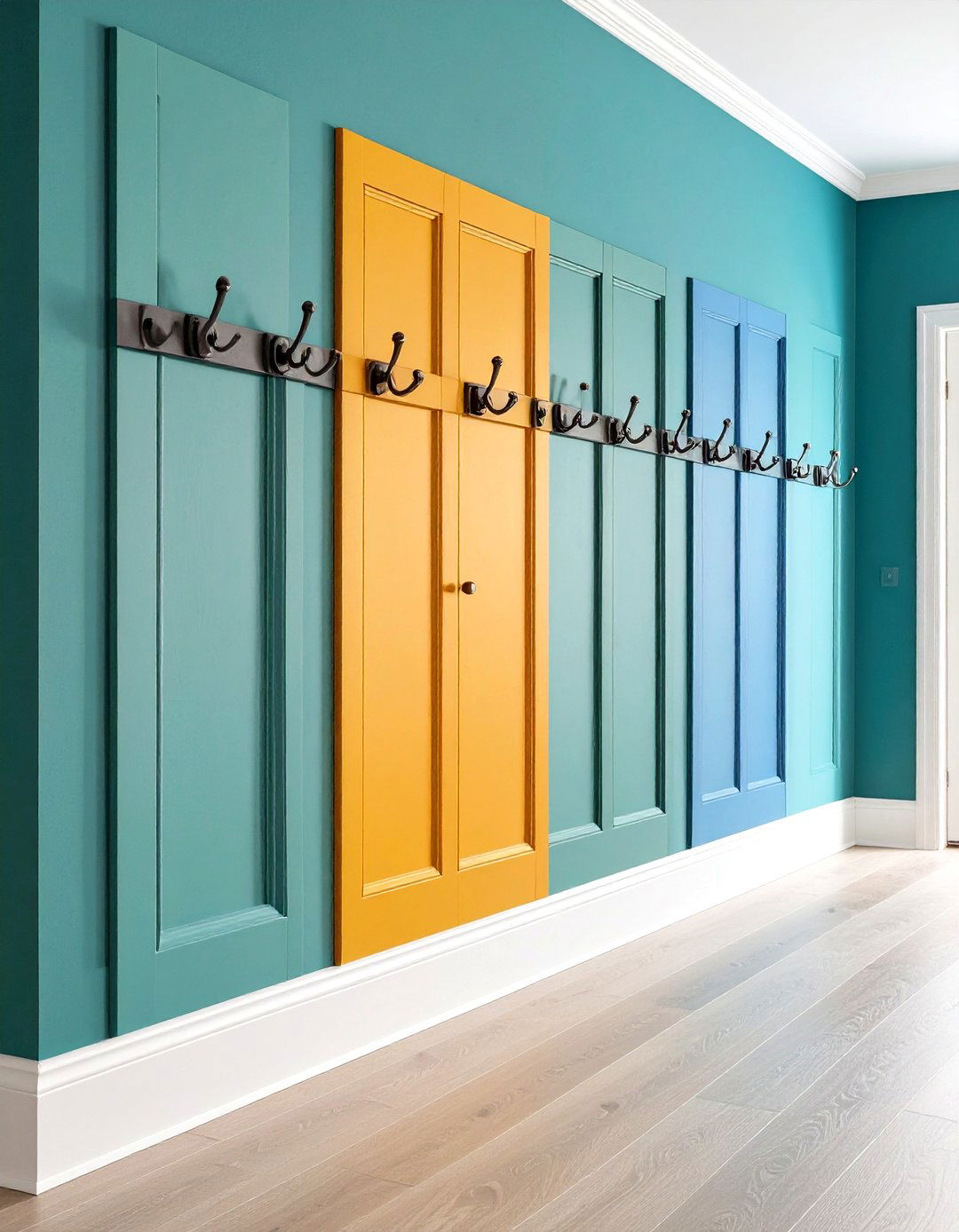
Combine functionality and style by installing a peg rail or coat hooks directly onto the wainscoting. This is ideal for busy households where guests and family members need quick access to outerwear. The wainscoting provides a sturdy backdrop, while the hooks enhance utility without disrupting the design flow. Choose sleek metal hooks for modern spaces or vintage-style pegs for a traditional look.
15. LED-Illuminated Wainscoting
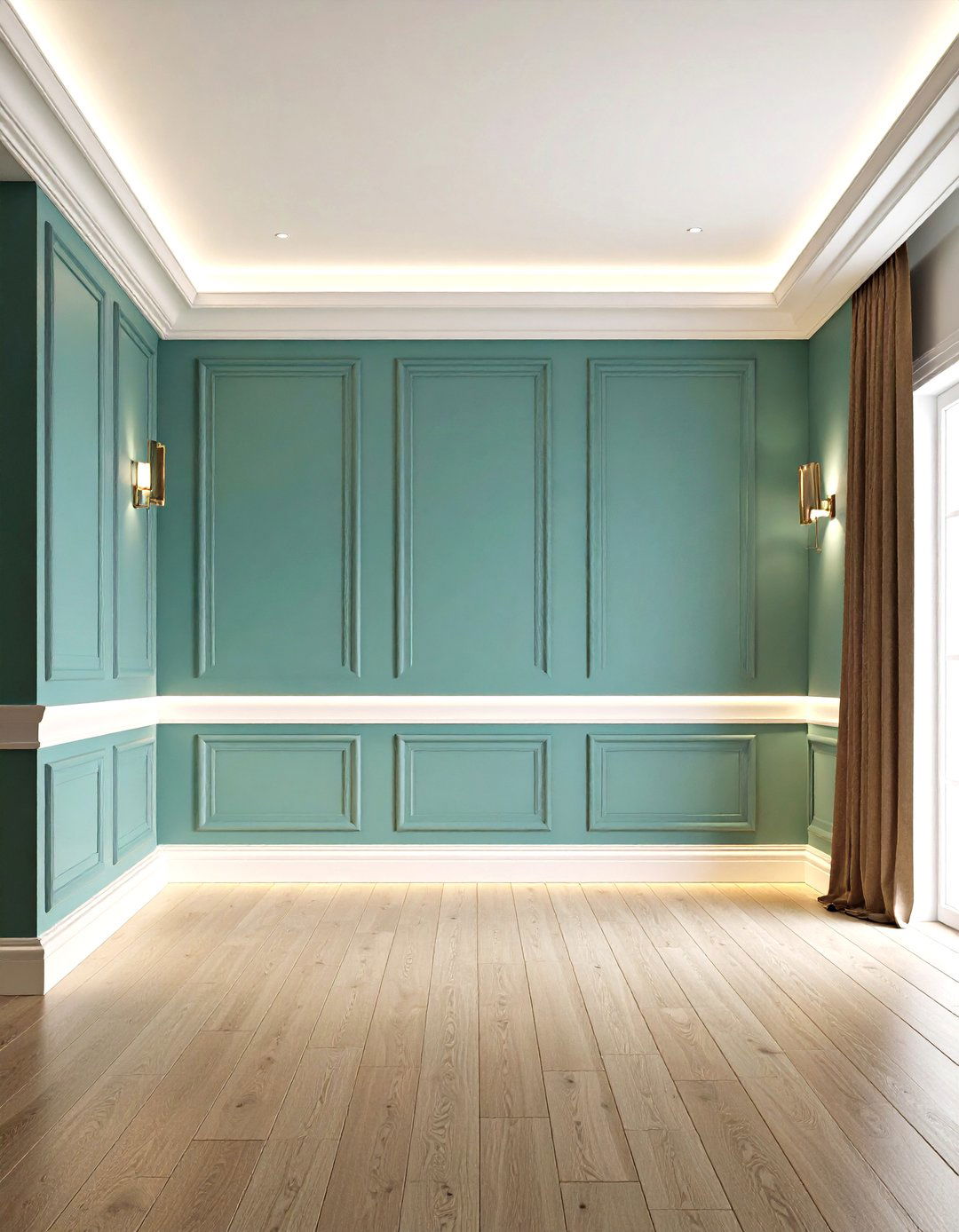
For a contemporary statement, integrate LED strip lighting either beneath the chair rail or inside recessed panels. Soft, warm LEDs can highlight the texture of the wainscoting, creating ambient glow and guiding guests into the home. This modern twist works especially well in minimalist or industrial-inspired entryways. Ensure wiring is concealed behind the panels for a seamless finish, and opt for dimmable strips to adjust mood and brightness.
16. Varied-Height Custom Wainscoting
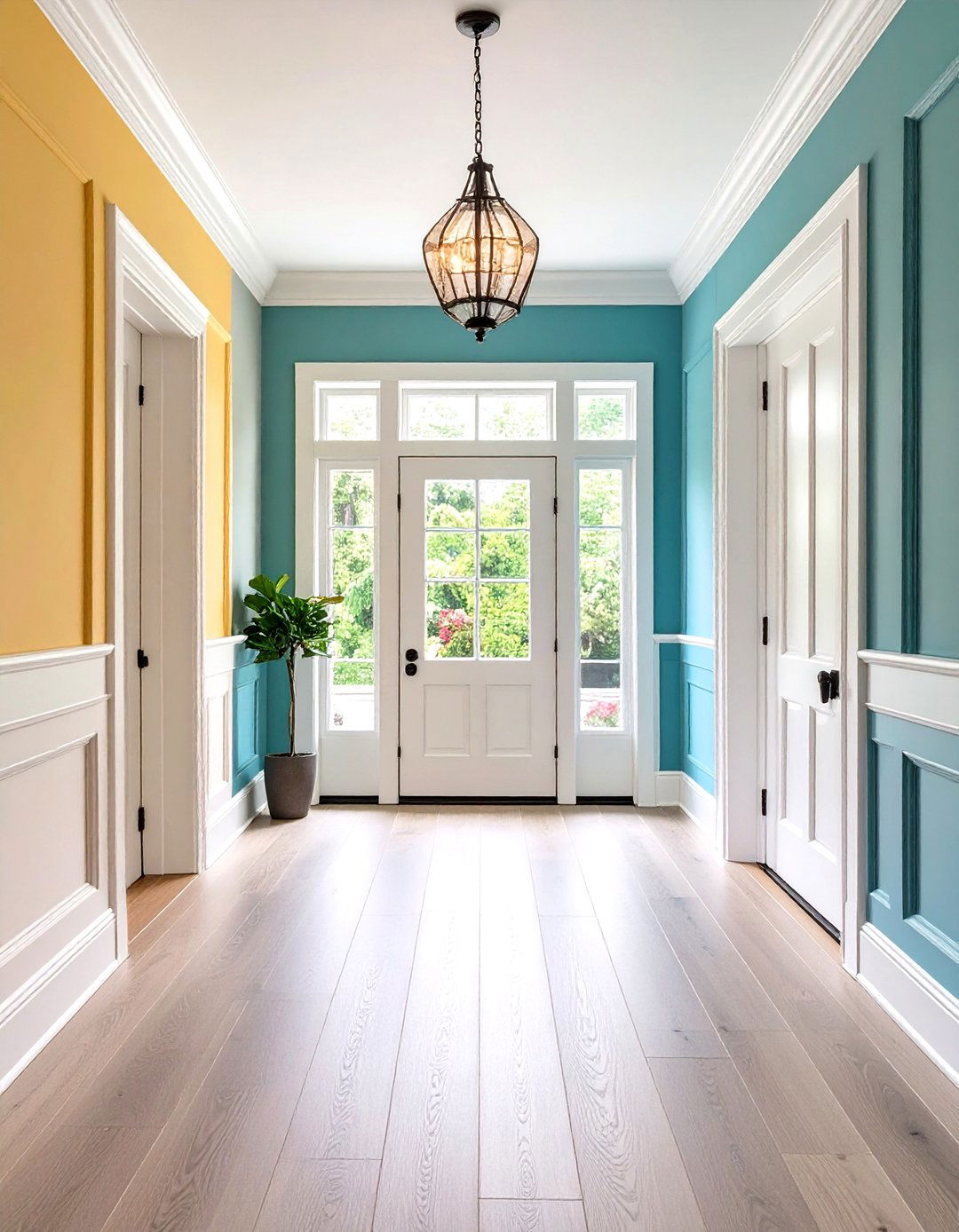
Break from uniformity by varying wainscoting height across different walls—taller around doorways and lower on walls with furniture. This tailored approach can emphasize architectural features and create visual intrigue. It also accommodates built-ins or console tables while ensuring the wainscoting doesn’t overpower art or mirrors hung above. Careful planning and measuring are key to achieving a balanced, intentional design.
17. Traditional Raised Beadboard with Cap Rail
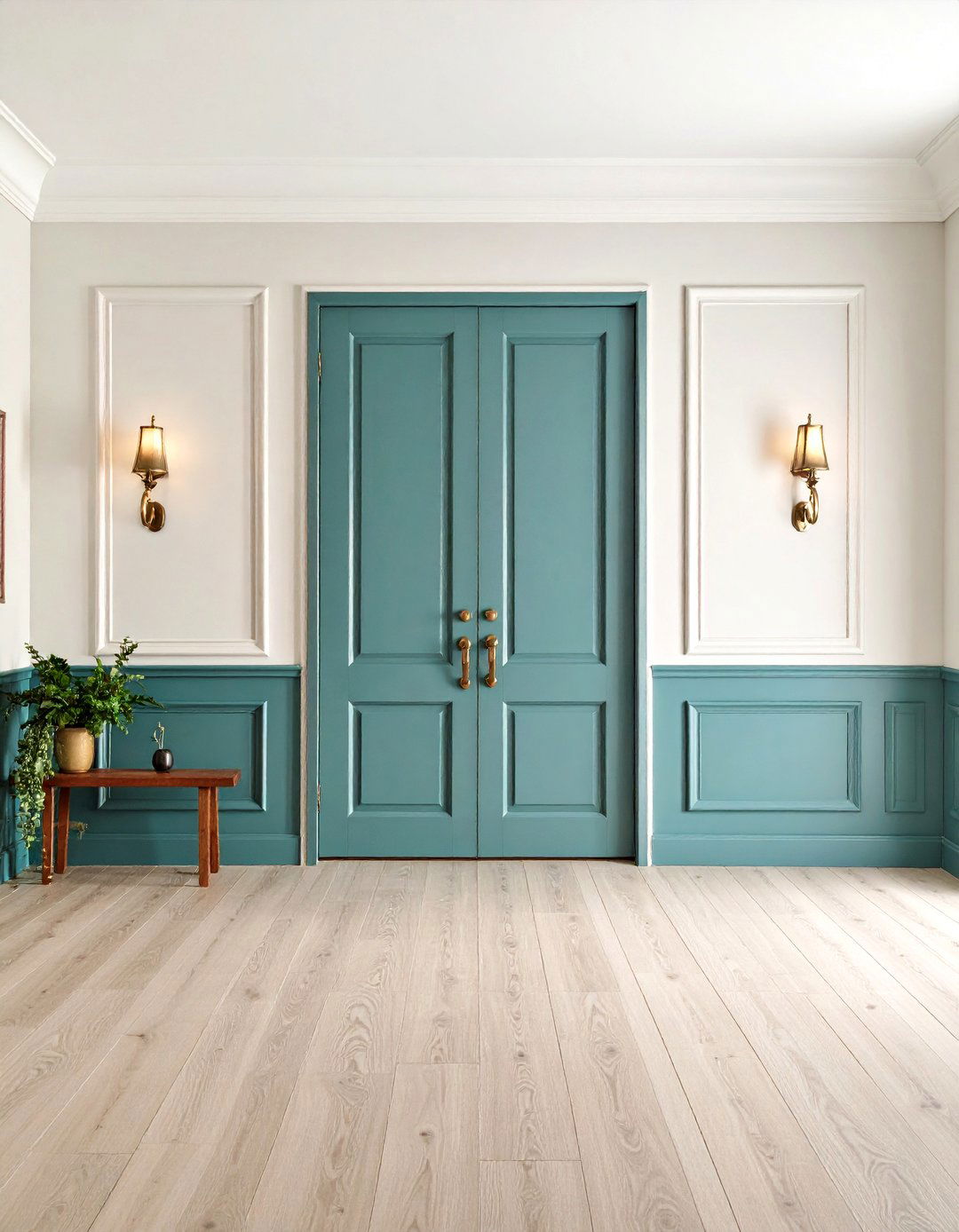
Combine raised beadboard panels with a decorative cap rail for a vintage-inspired entryway. The cap rail serves as a narrow shelf for small décor items, such as framed photos or seasonal accents. The raised beadboard adds depth and texture, while the cap rail introduces an additional horizontal line that can be highlighted in a contrasting finish. This layered look conveys craftsmanship and attention to detail.
18. Minimalist Thin-Board Wainscoting
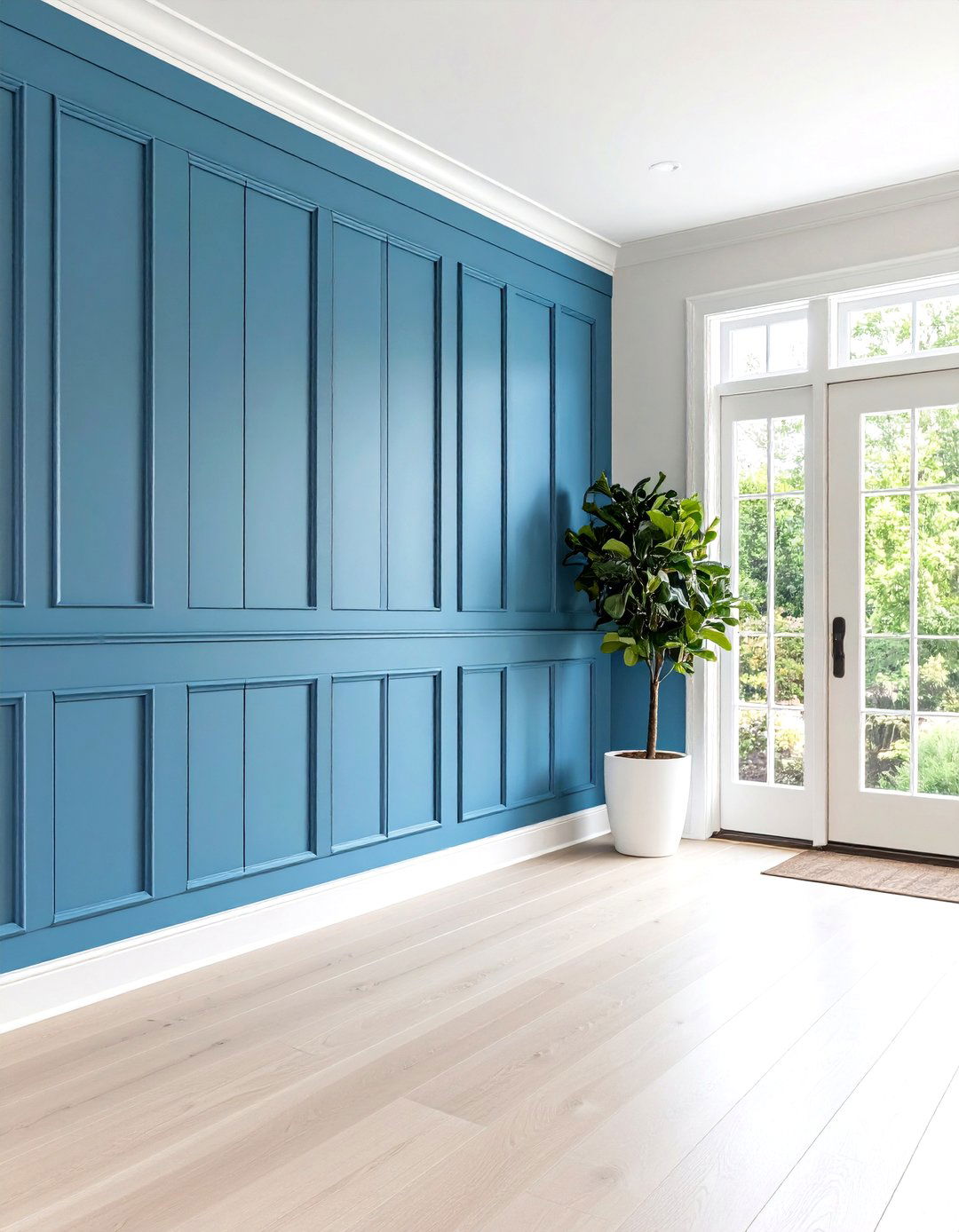
For a sleek, modern aesthetic, use thin boards with minimal spacing to create wainscoting that reads as subtle texture rather than bold paneling. Paint the boards and the wall in the same matte finish, allowing light and shadow to define the panels. This understated approach suits open-concept homes and transitional spaces, offering visual interest without heavy ornamentation.
19. Painted Panel Wainscoting with Contrasting Trim
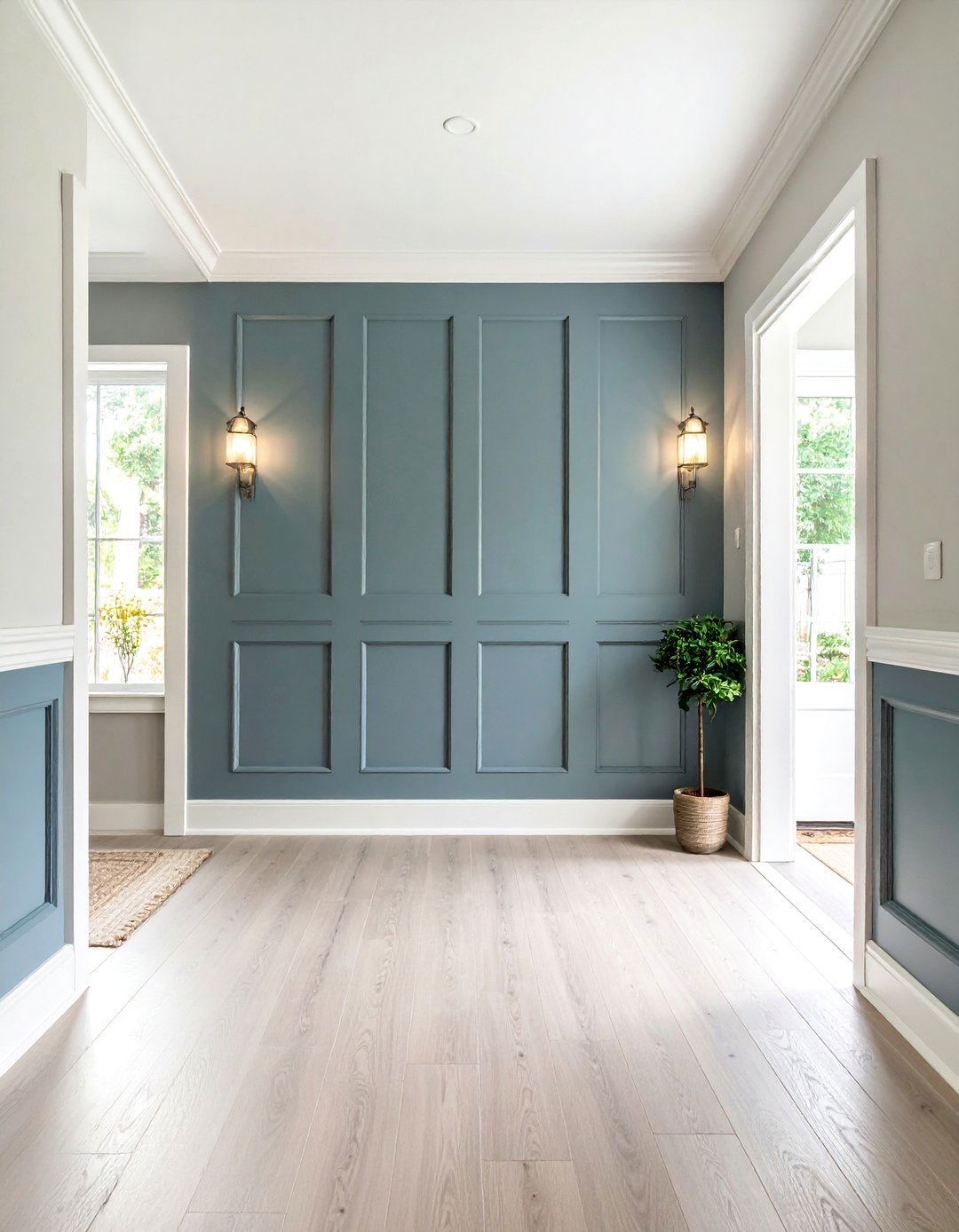
Paint the recessed panels one color and the trim another for a two-tone wainscoting effect. For example, soft gray panels with crisp white trim provide a sophisticated look that complements coastal or farmhouse styles. The contrast between panel infill and molding accentuates the craftsmanship and adds depth. This technique is especially effective on raised or recessed panel wainscoting where the profiles are more pronounced.
20. Faux Marble Panel Wainscoting
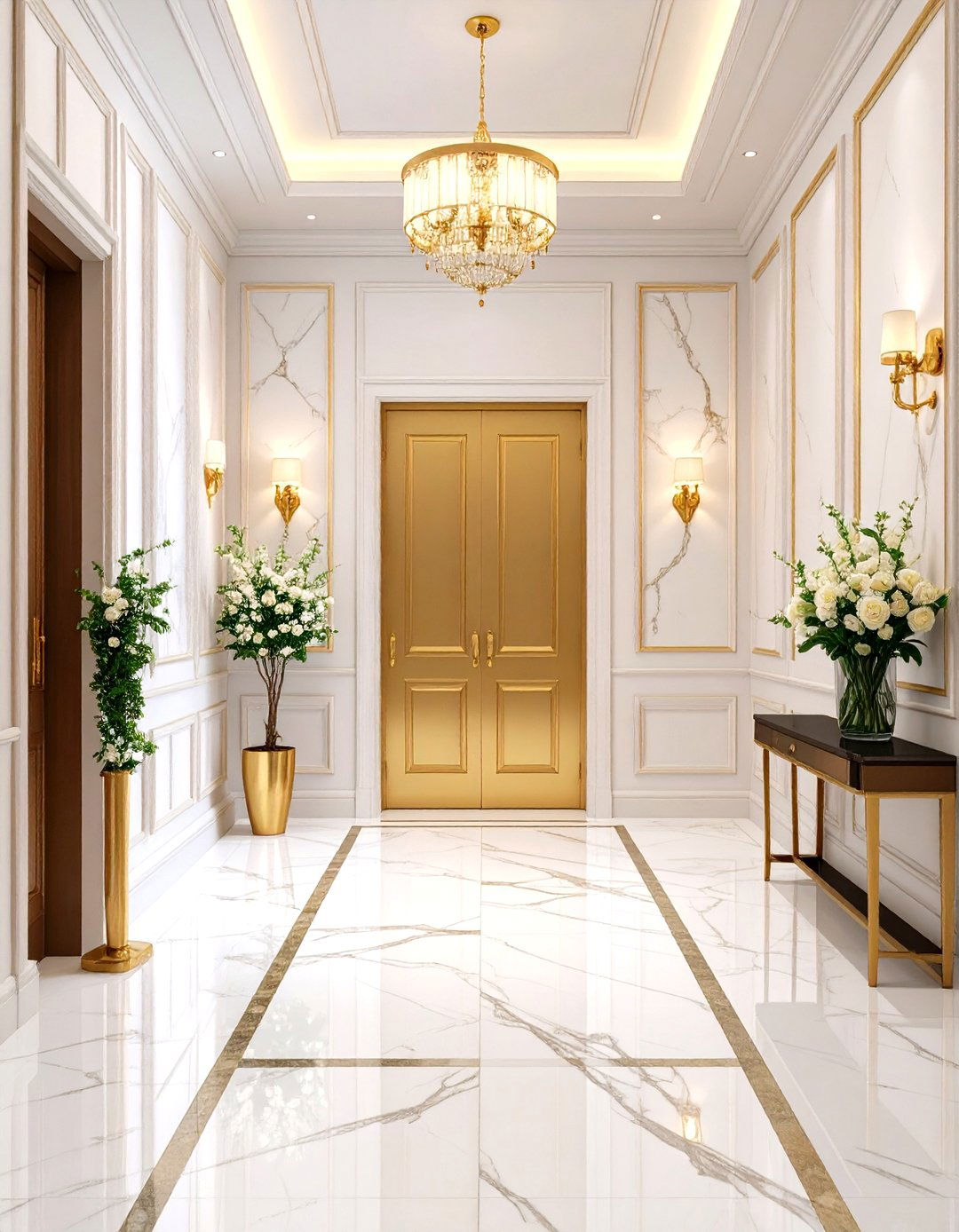
Elevate your entryway with faux marble panel wainscoting. High-quality marble-look laminate or painted wood panels can mimic the veining and luxury of real marble at a fraction of the cost. Pair with simple white or metallic trim to frame the panels, and finish with a clear sealant for durability. This opulent option brings a sense of grandeur and timeless sophistication to any home.
Conclusion:
From classic beadboard to cutting-edge LED illumination, these 20 wainscoting ideas offer a wealth of inspiration for transforming your entryway into a welcoming and stylish space. Whether you prefer the warmth of natural wood or the drama of dark, moody hues, there’s a wainscoting style to suit every design vision. Use these concepts to craft an entryway that reflects your personal taste and elevates the first impression of your home.


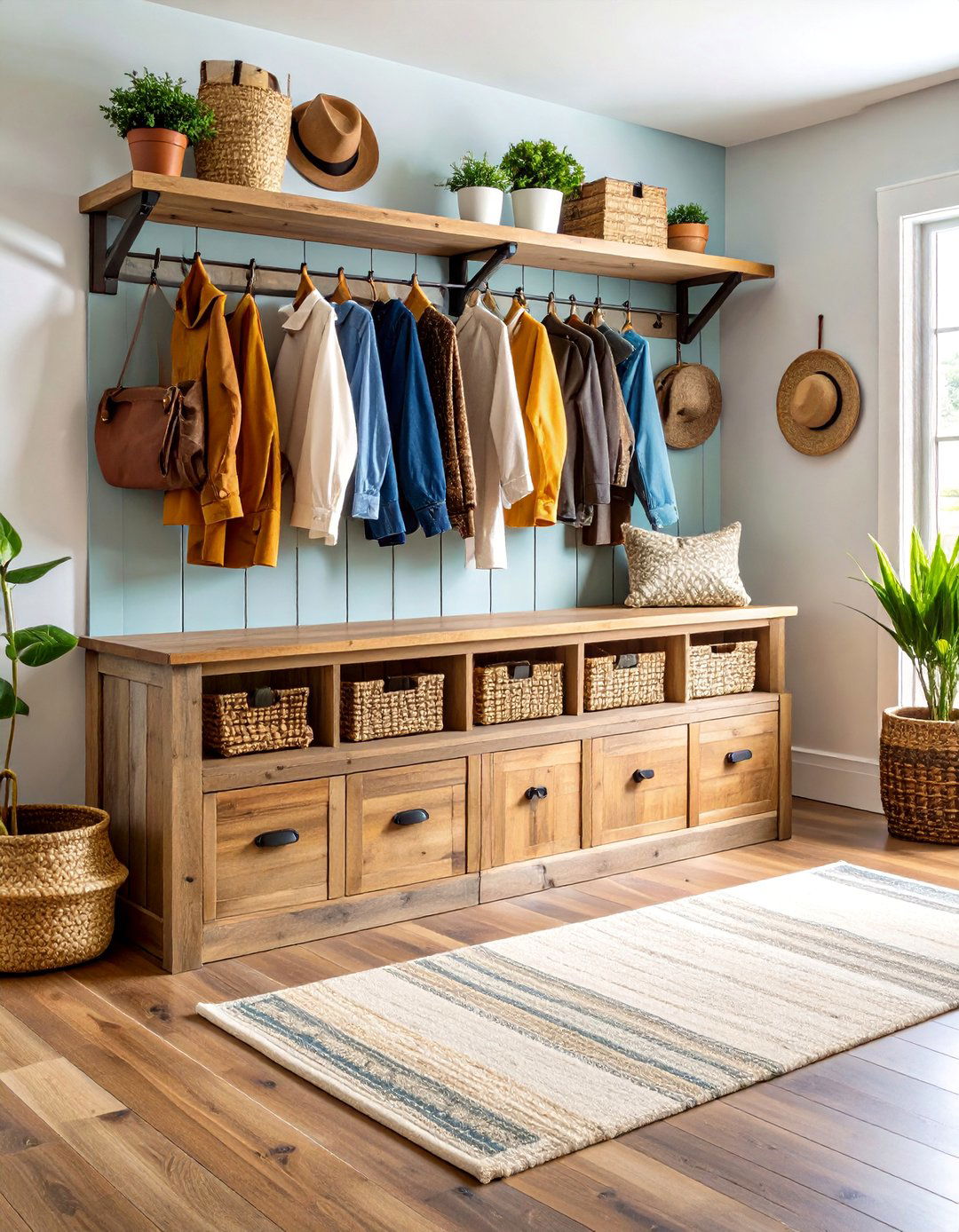
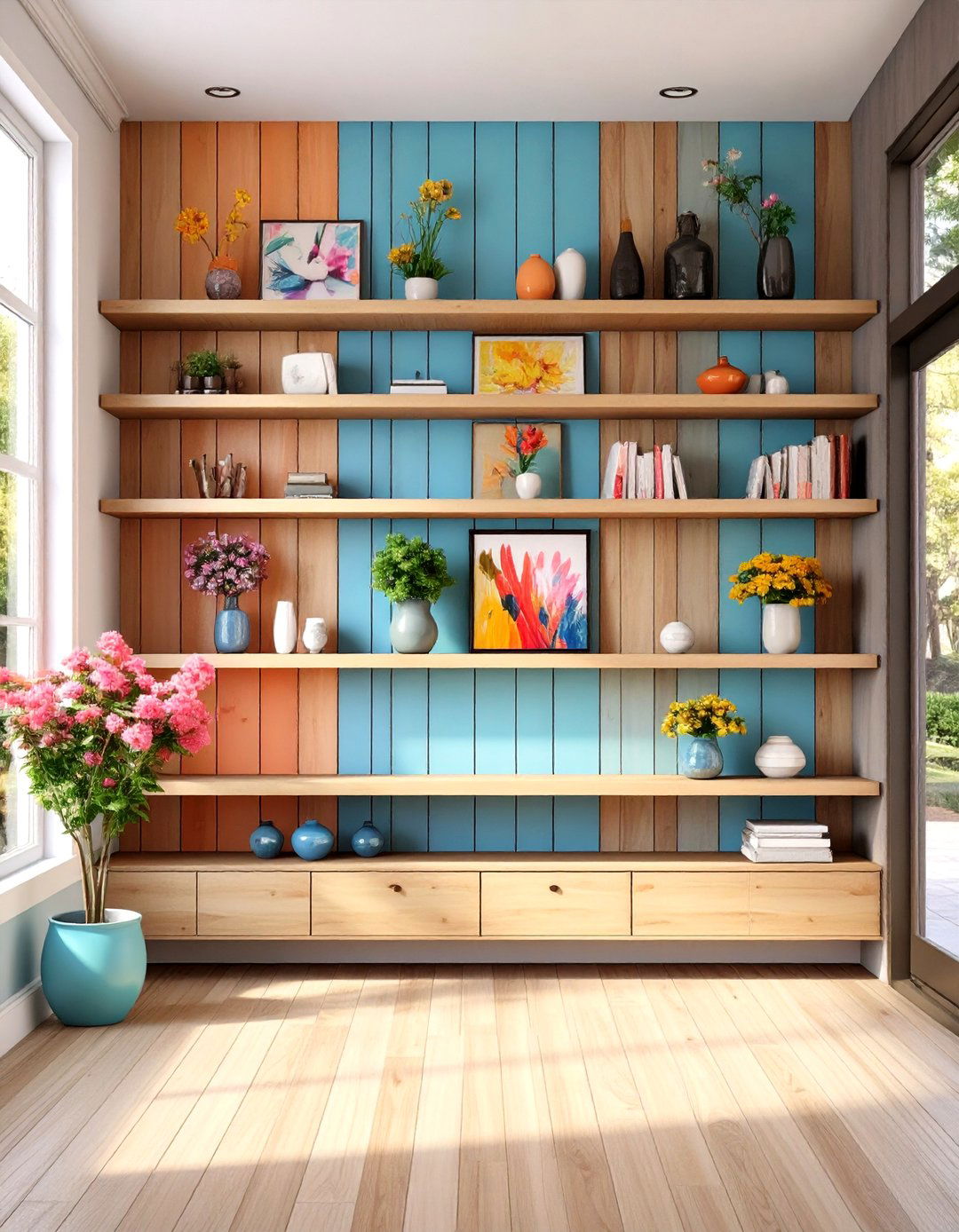
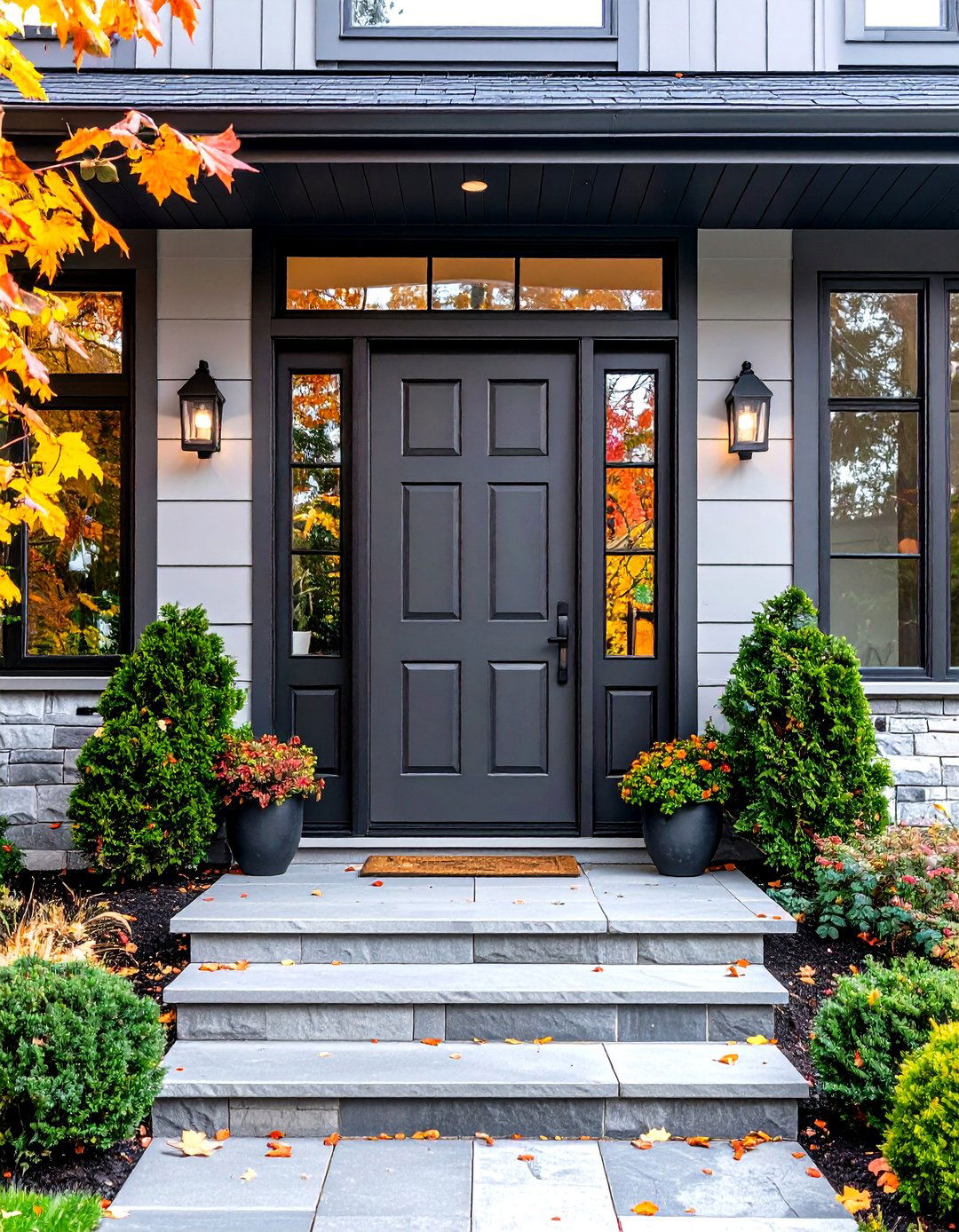

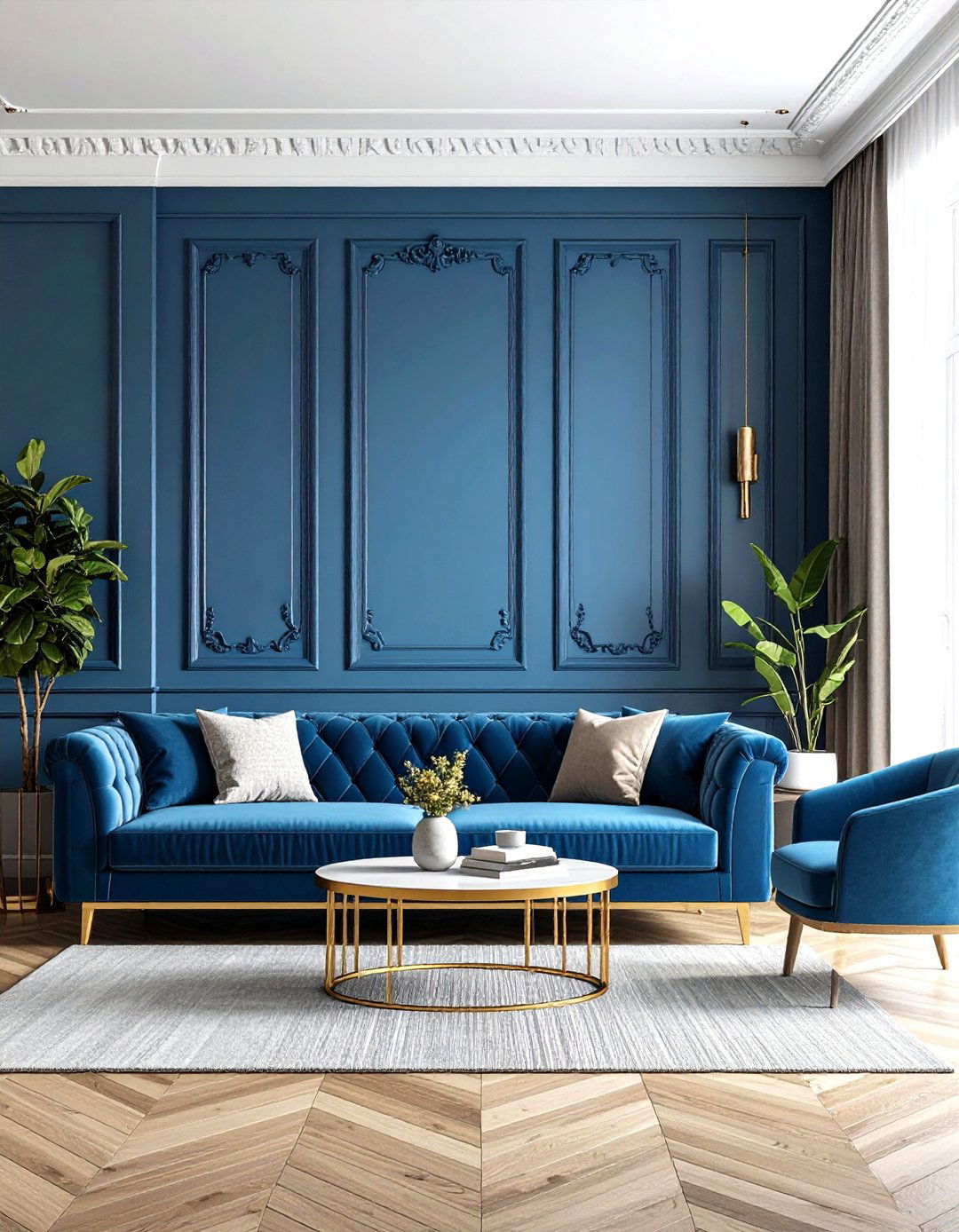
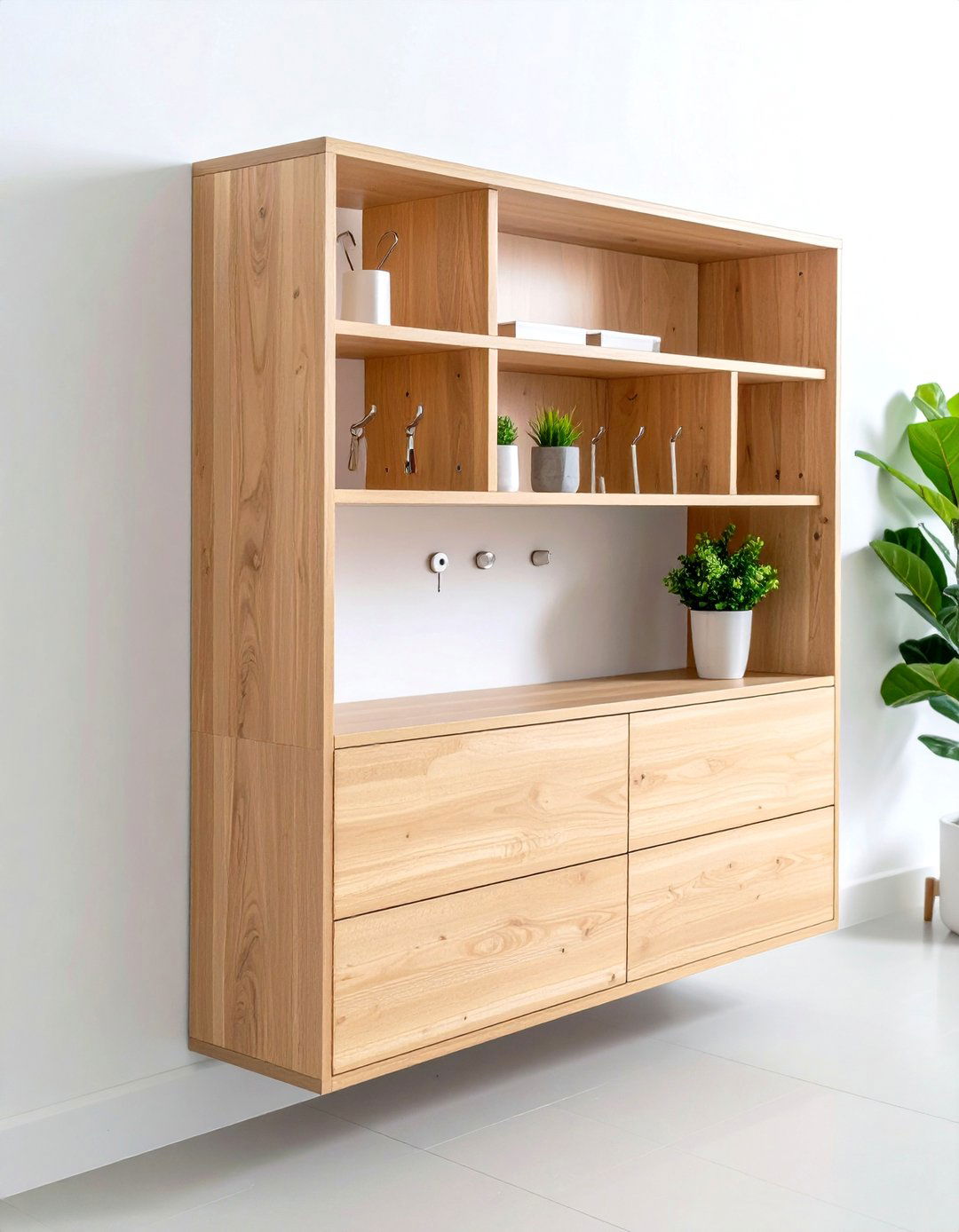
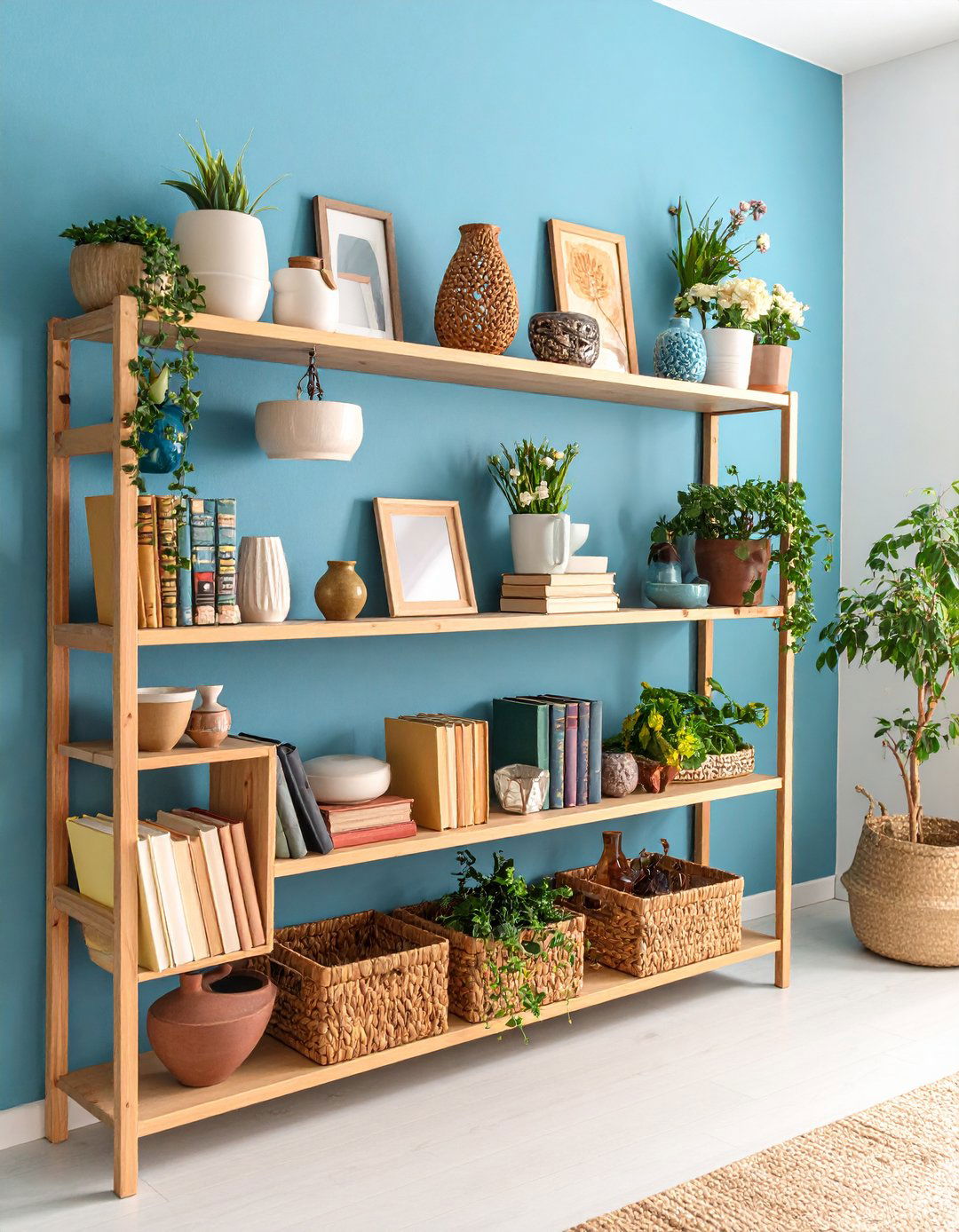
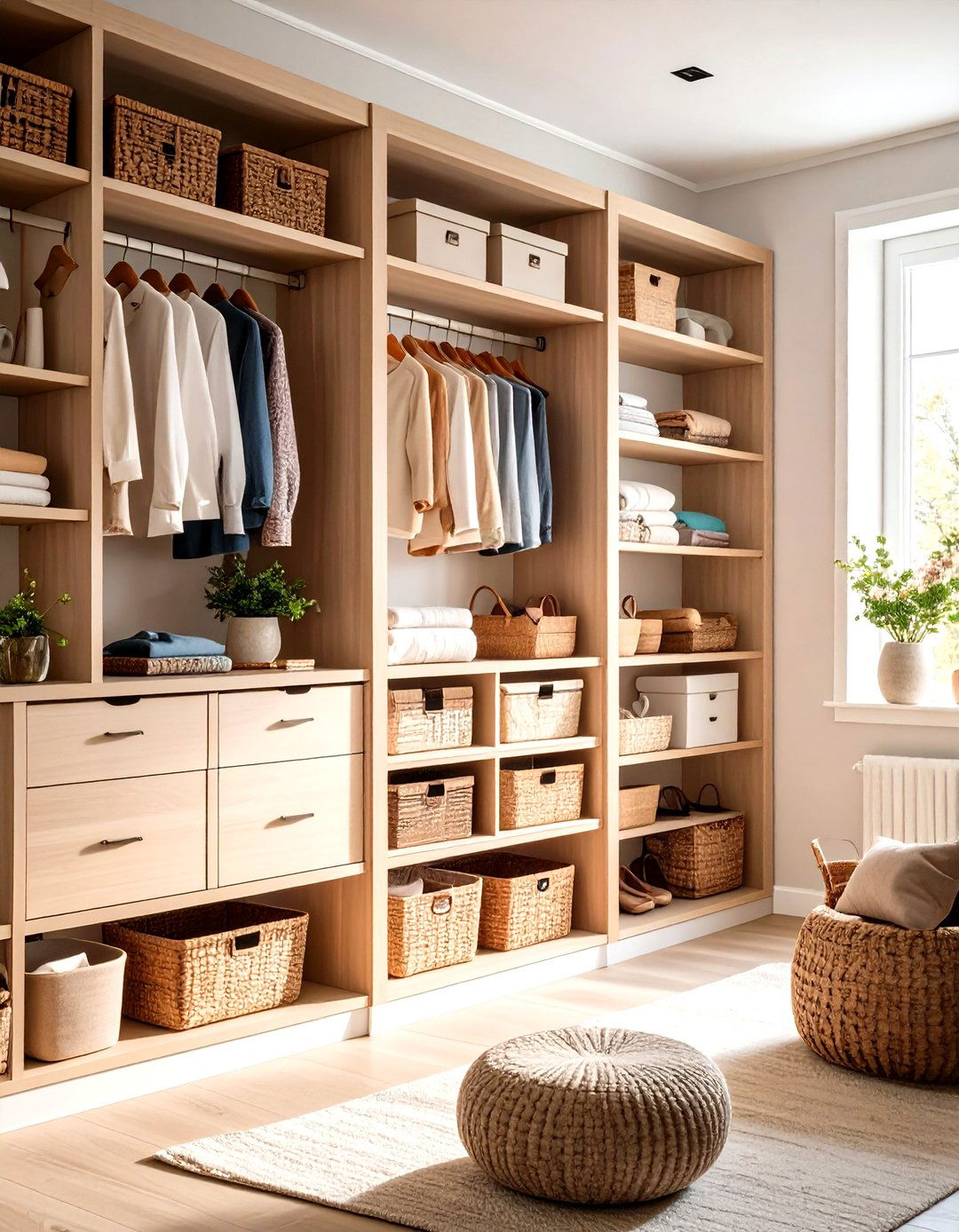
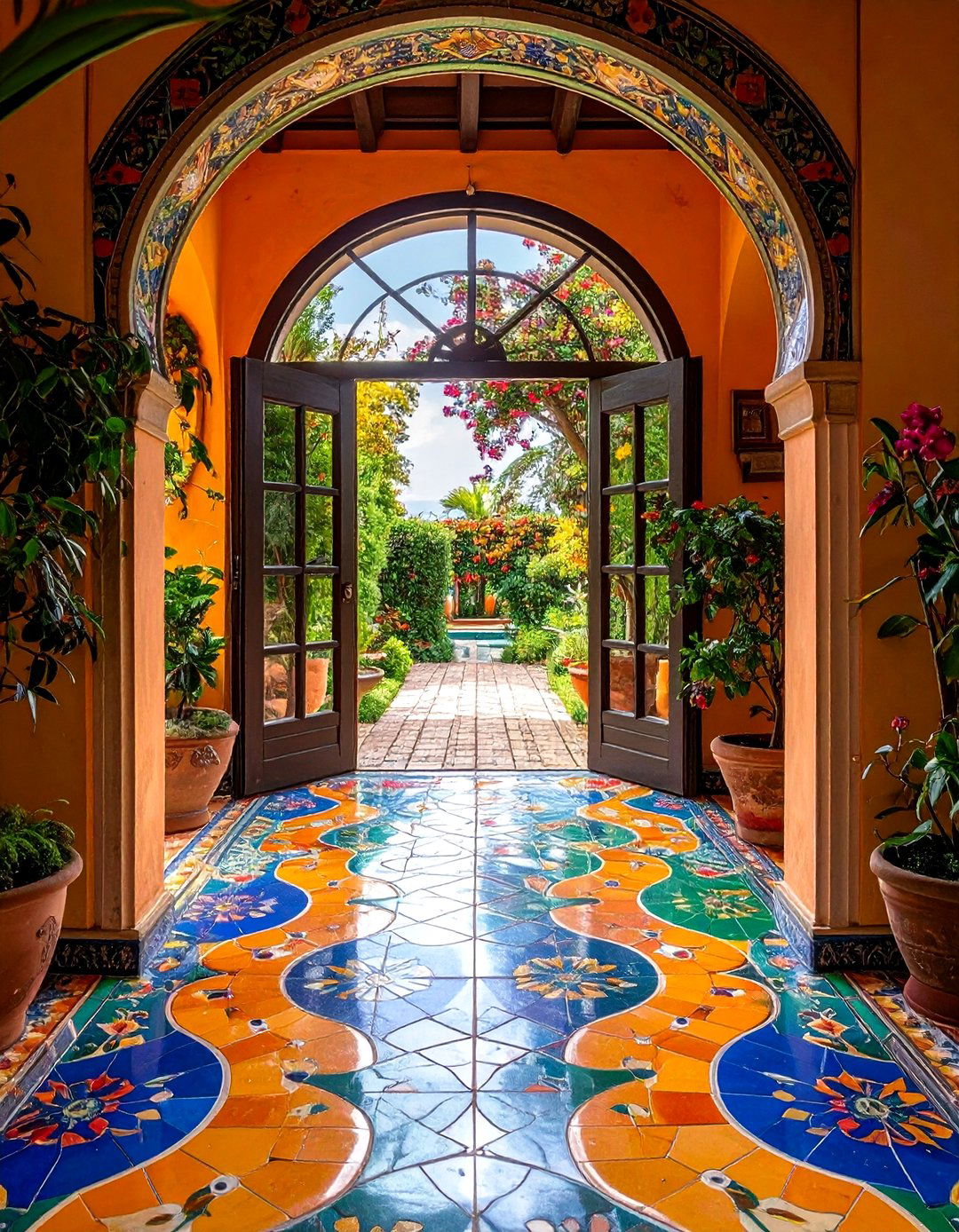
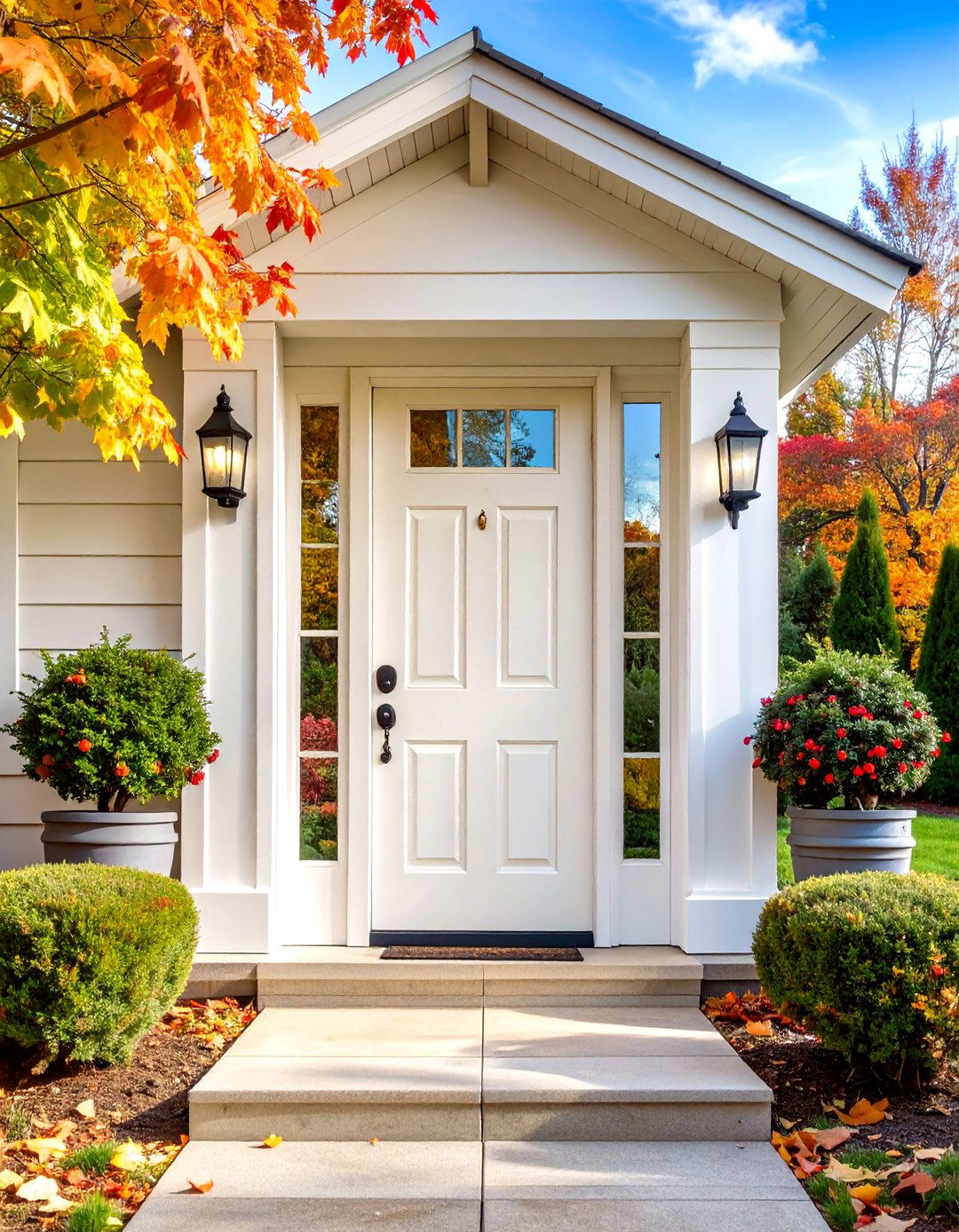
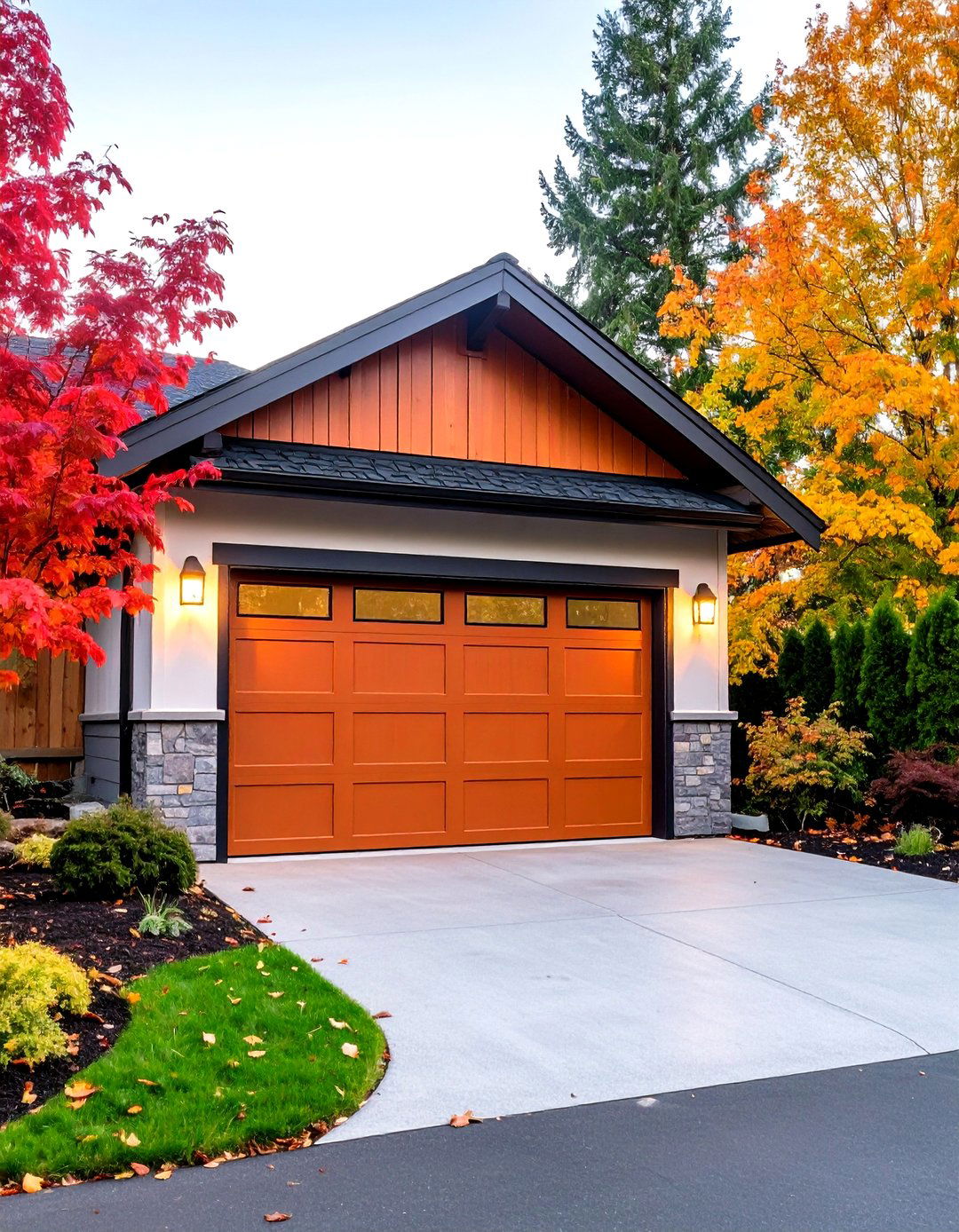
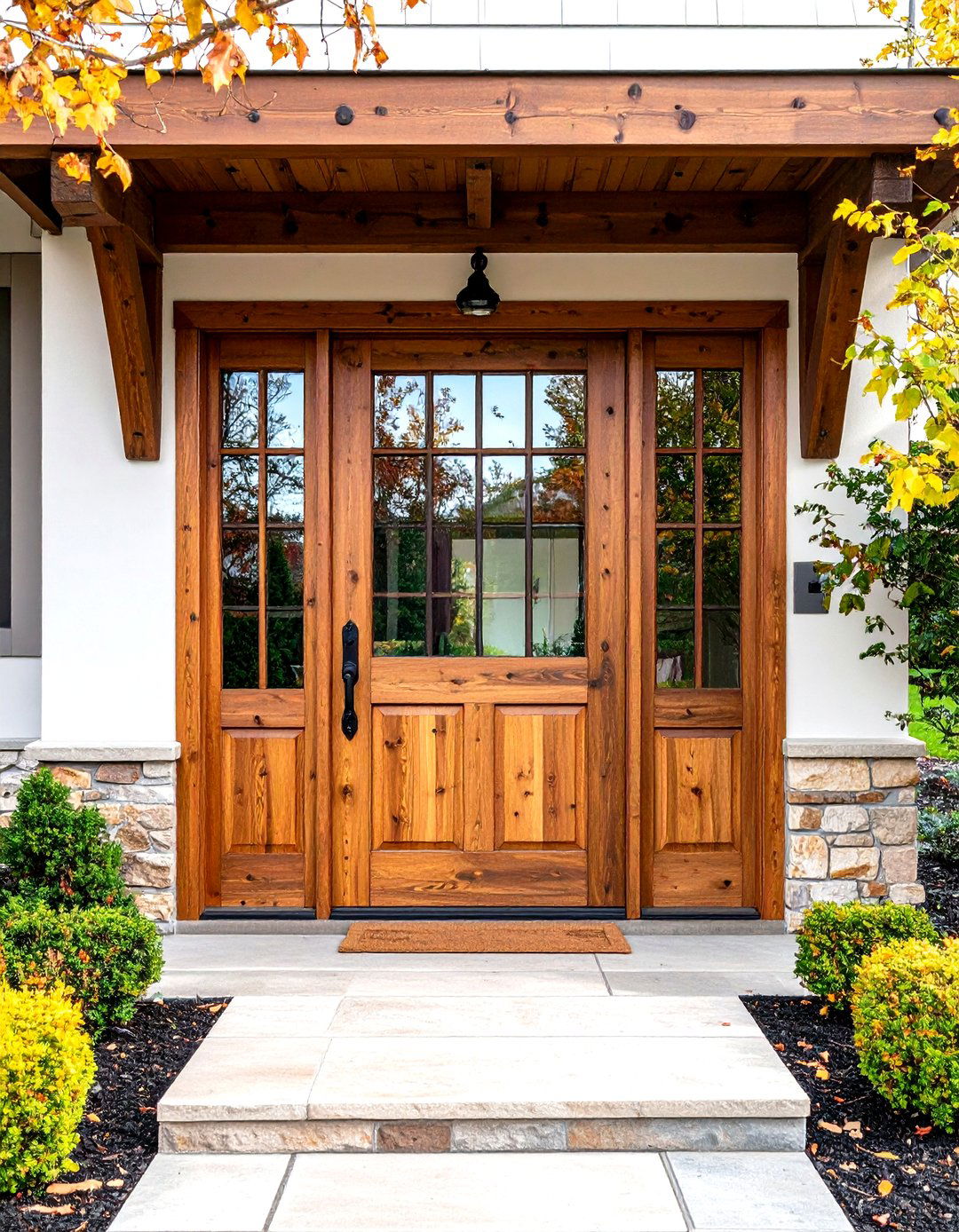
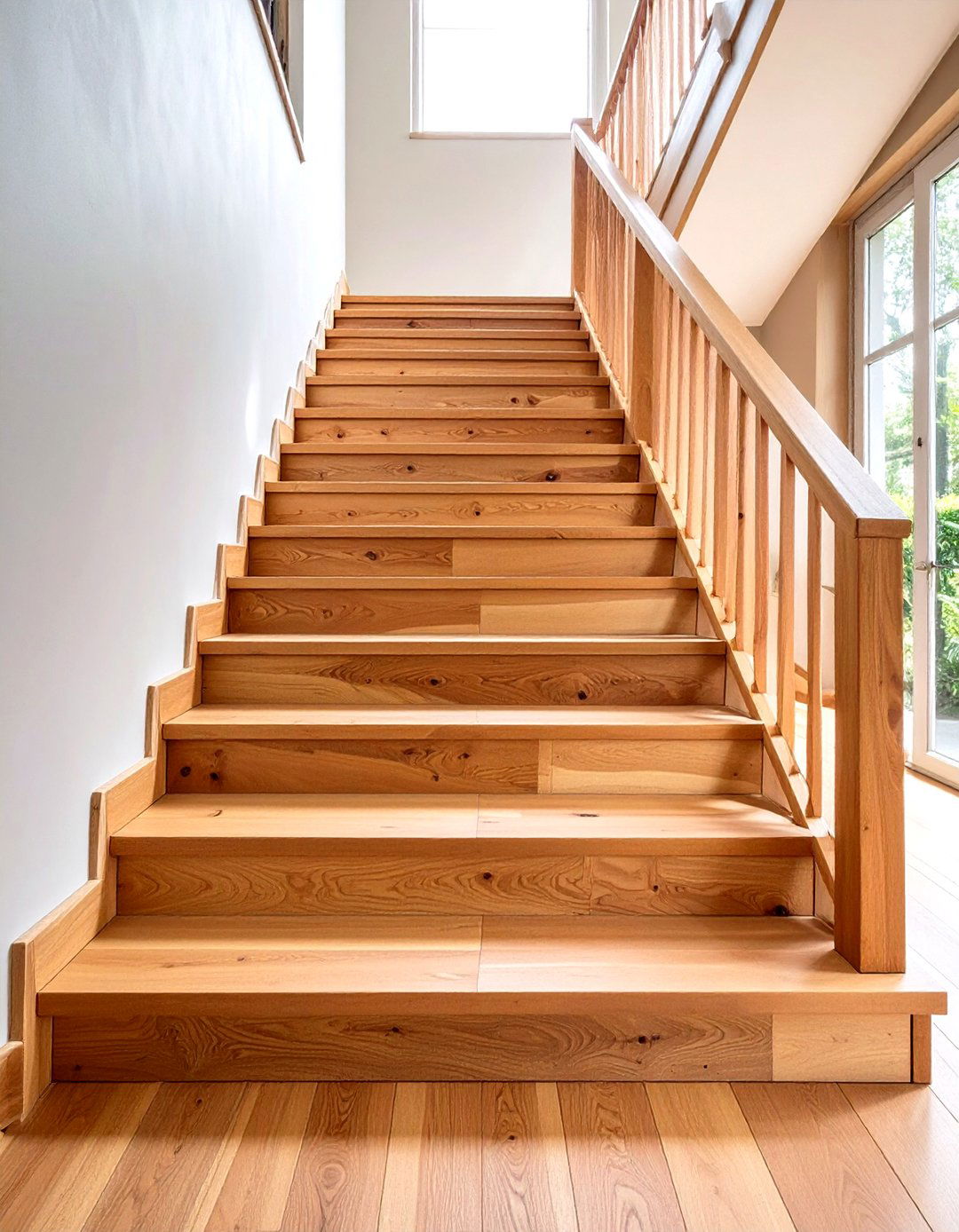
Leave a Reply